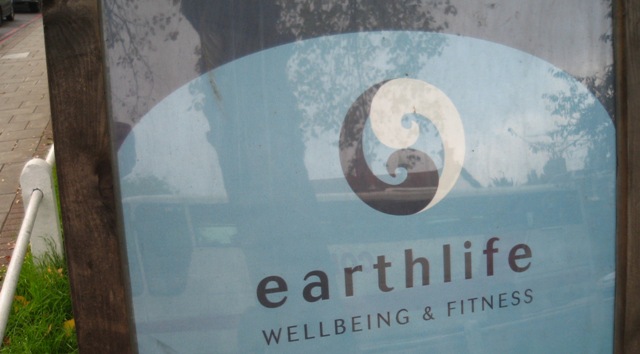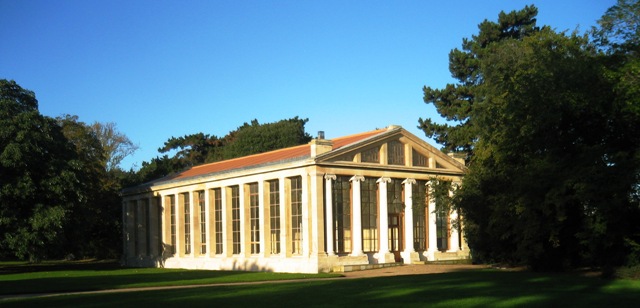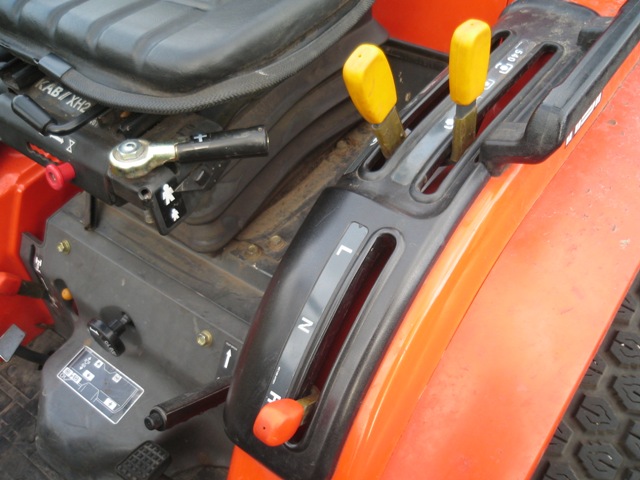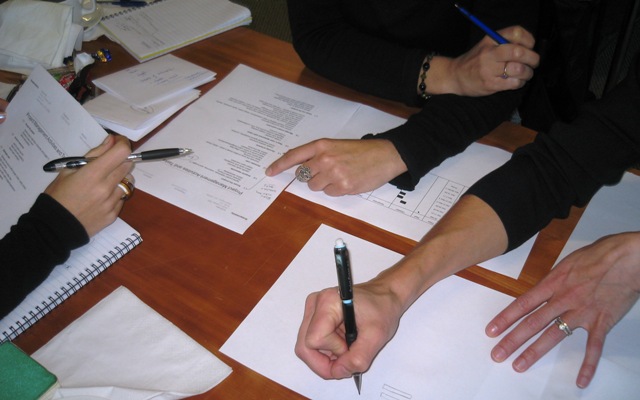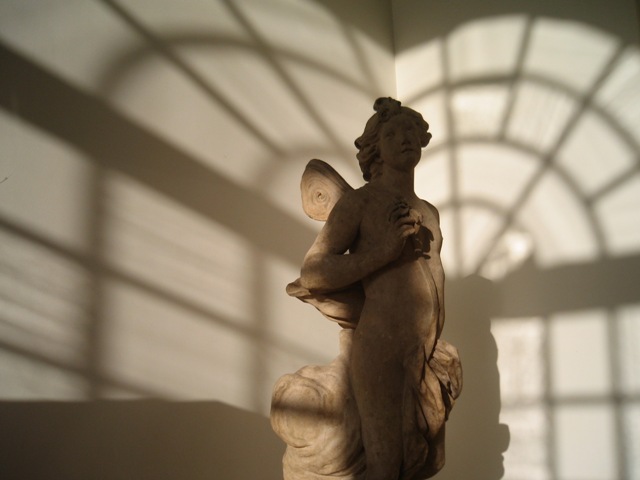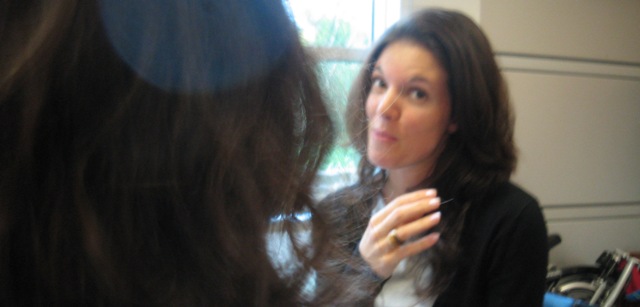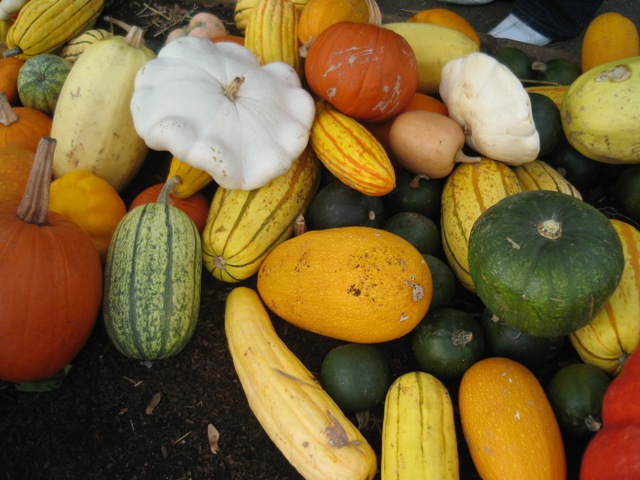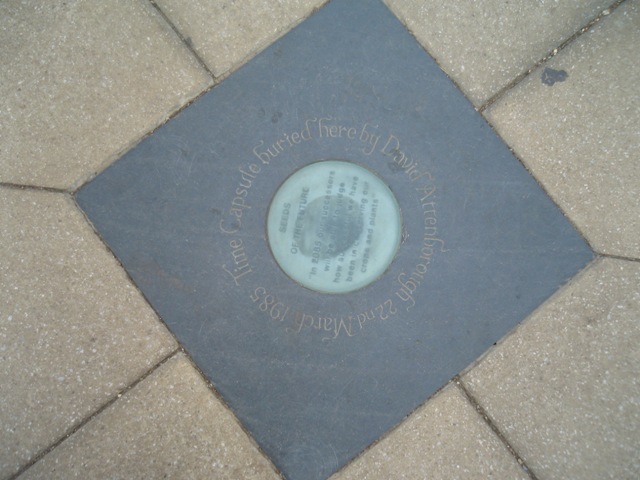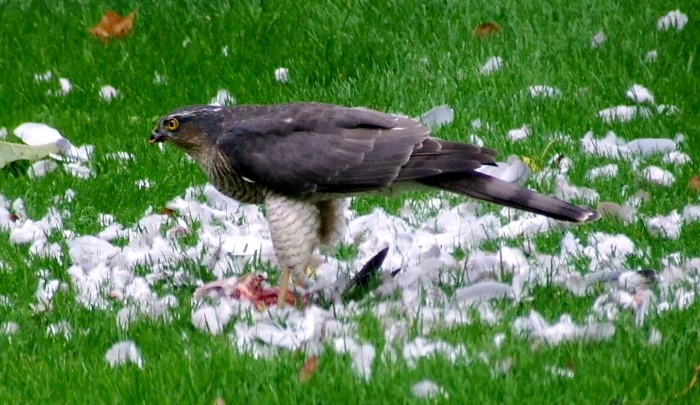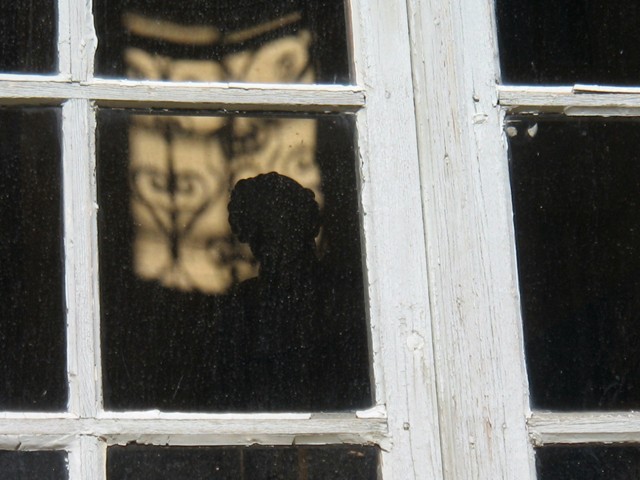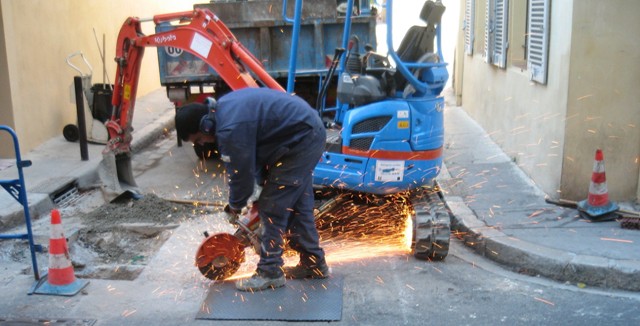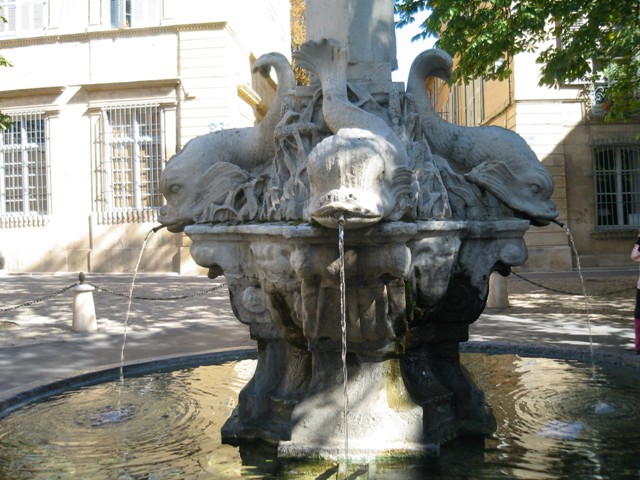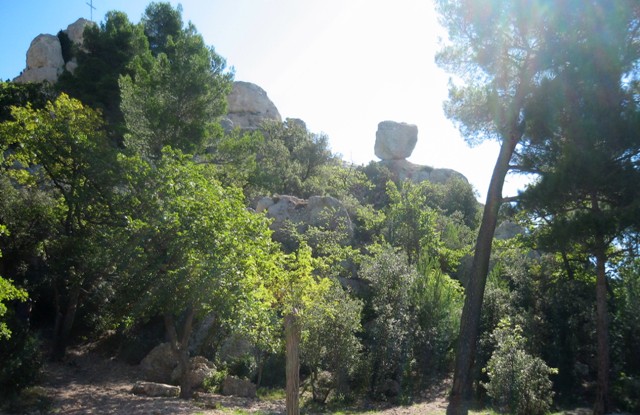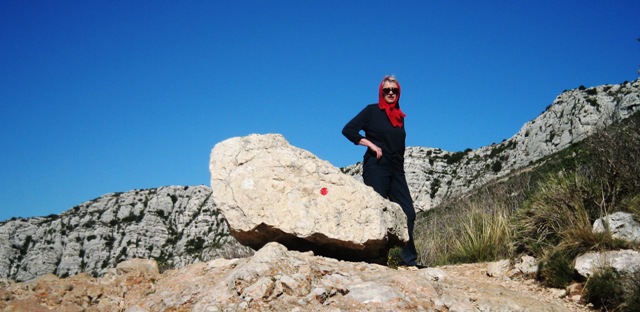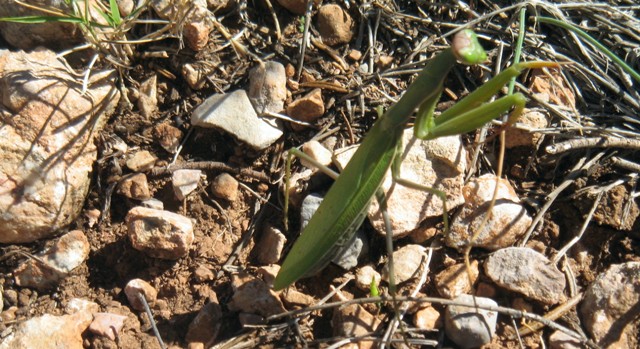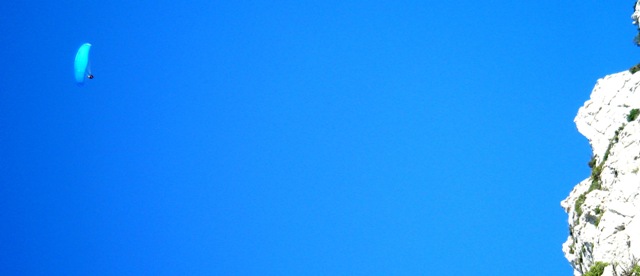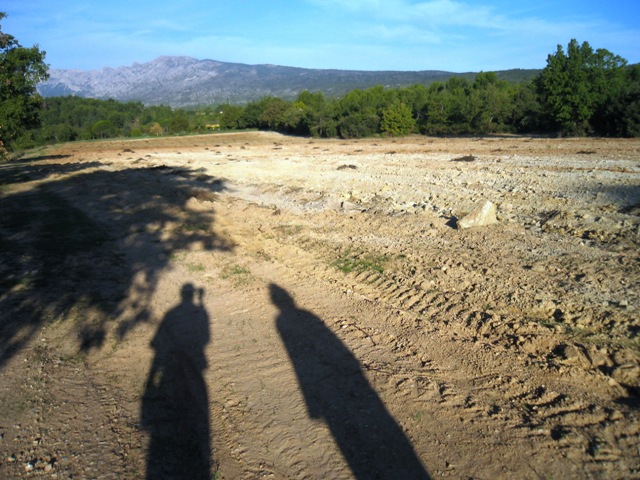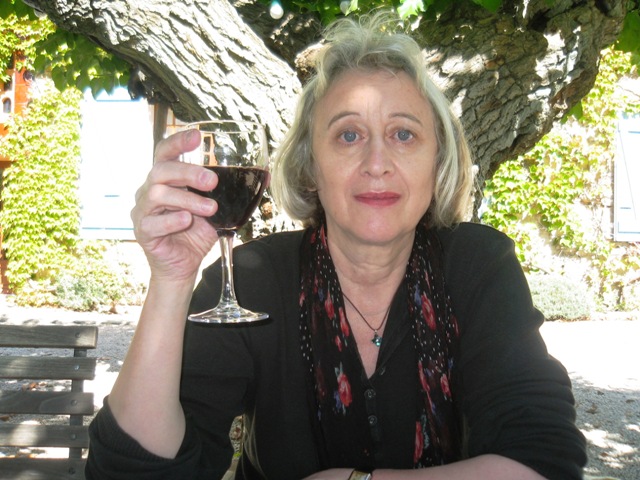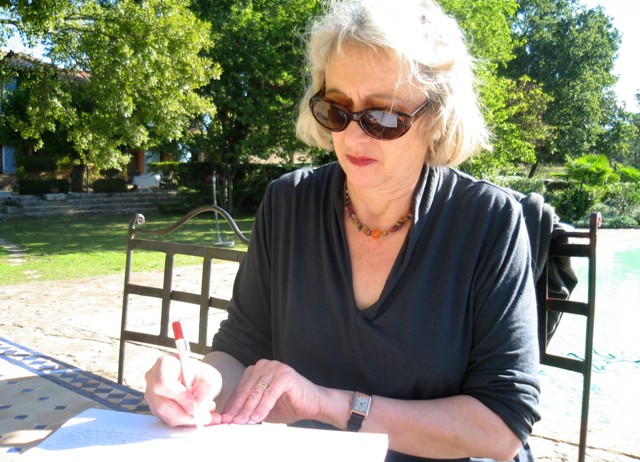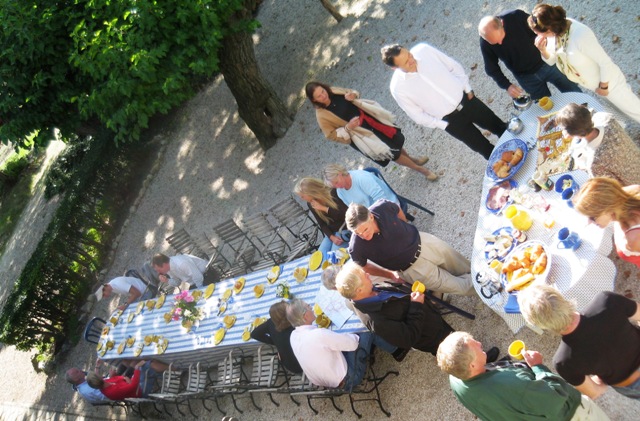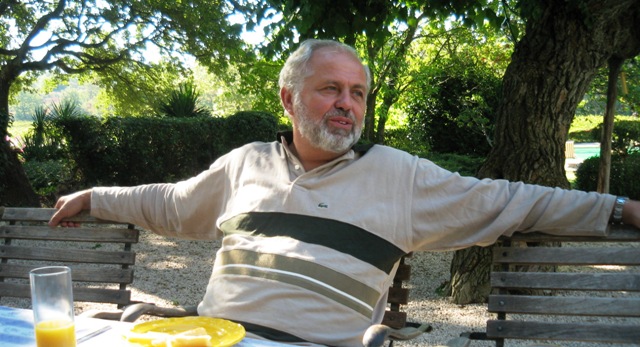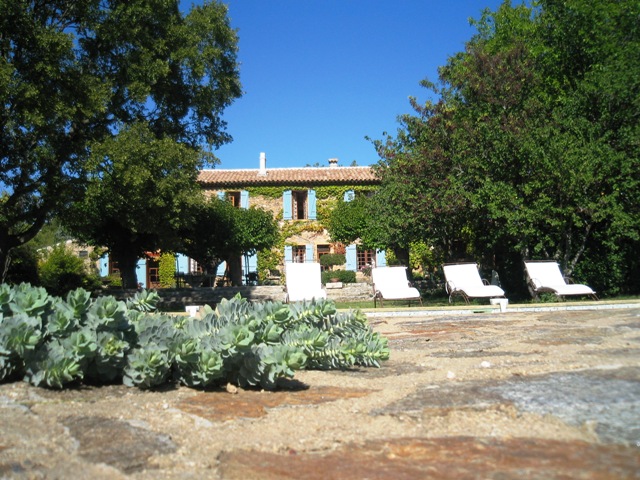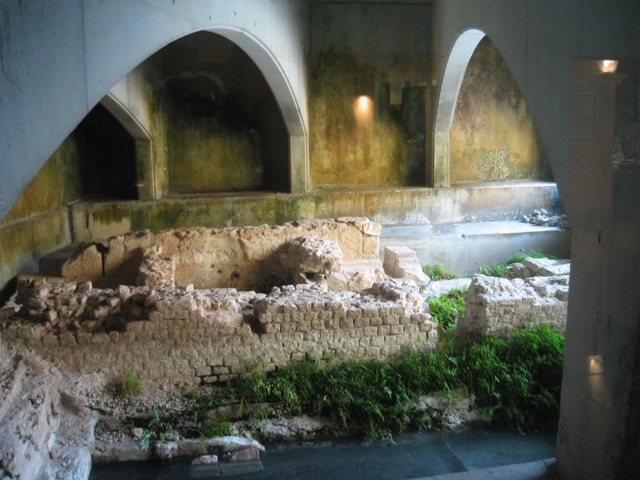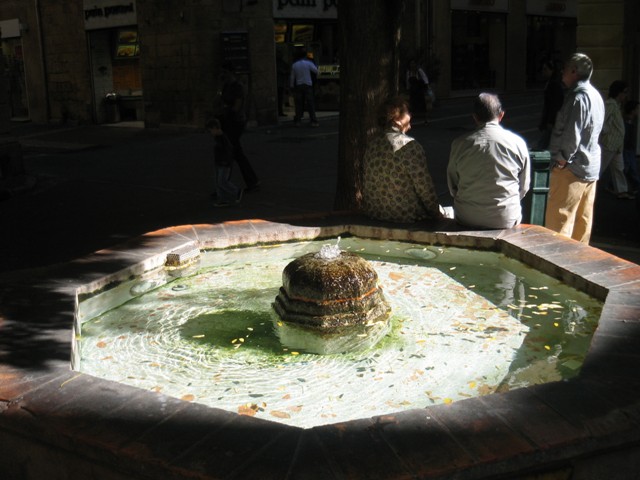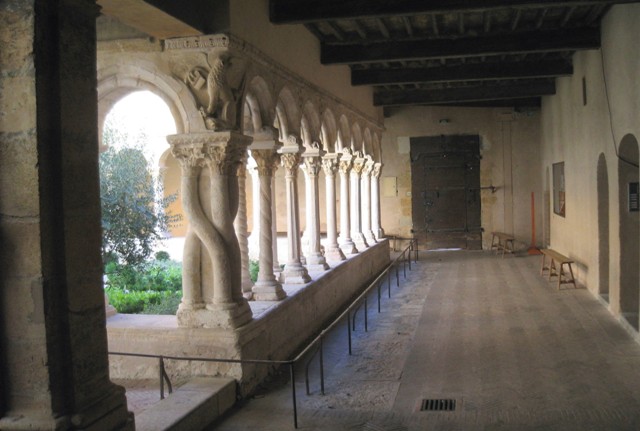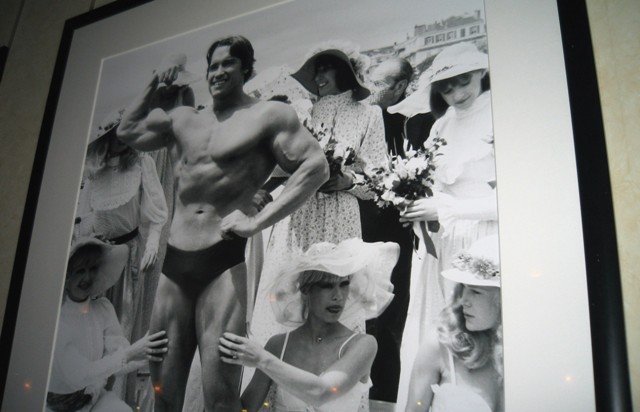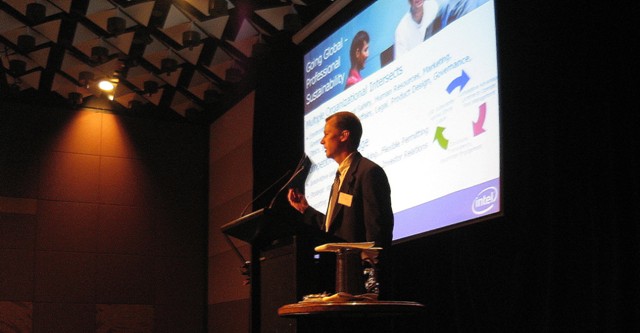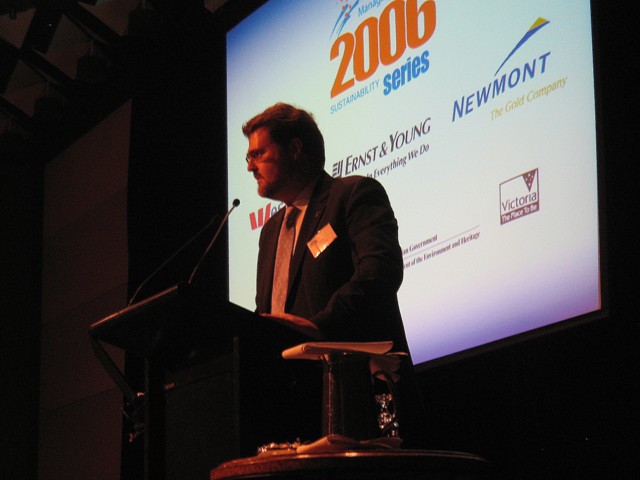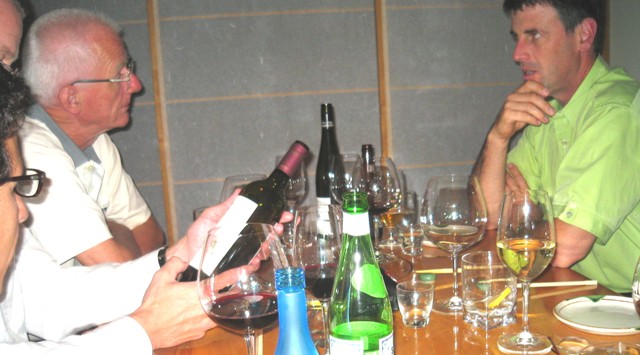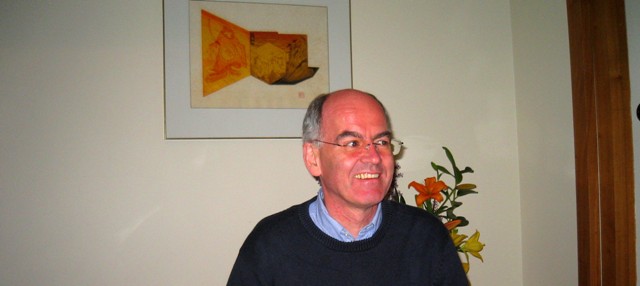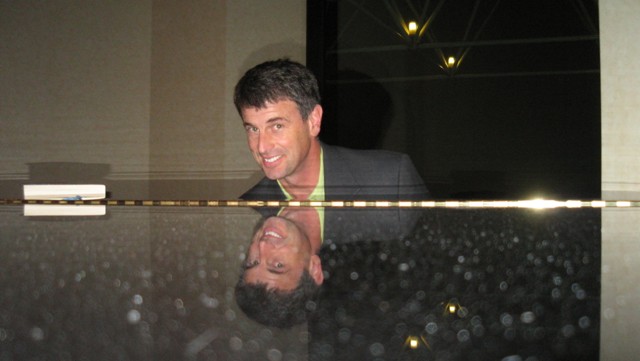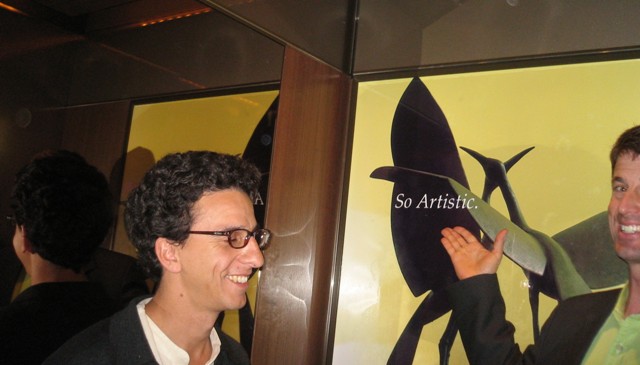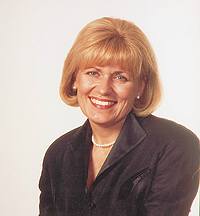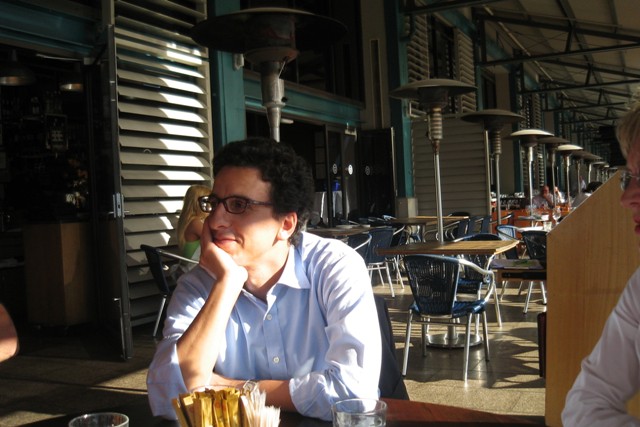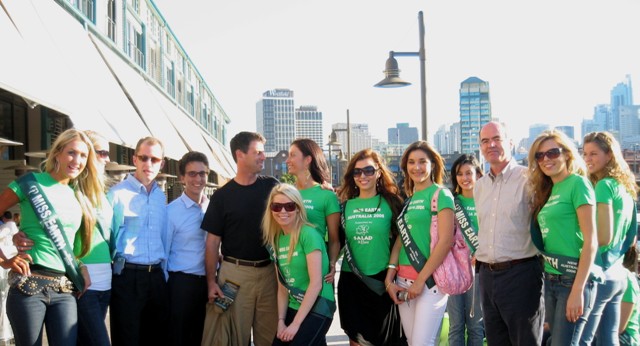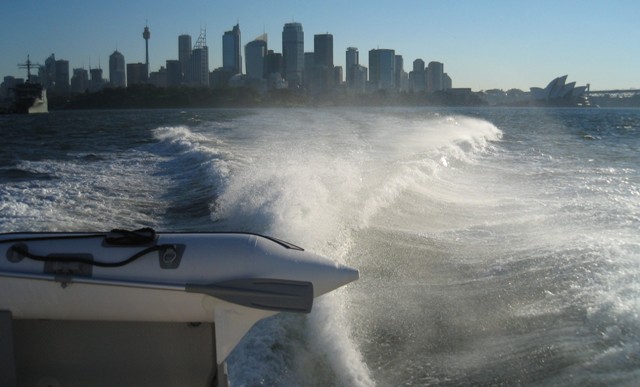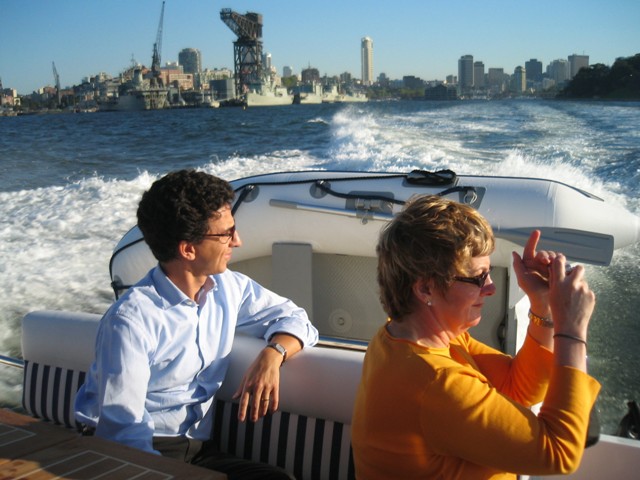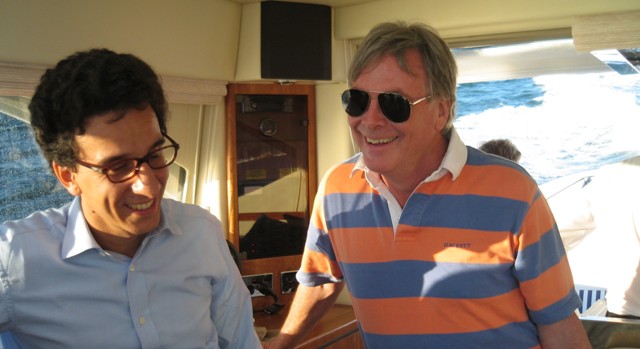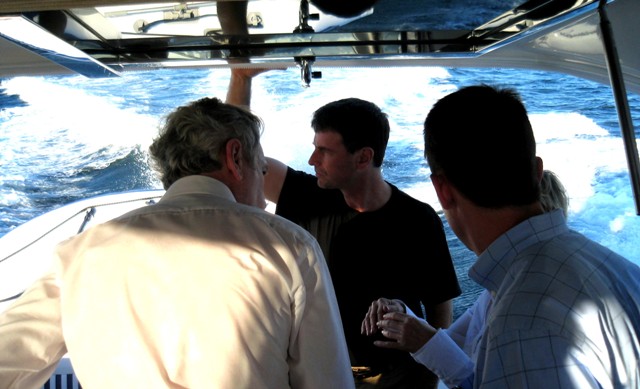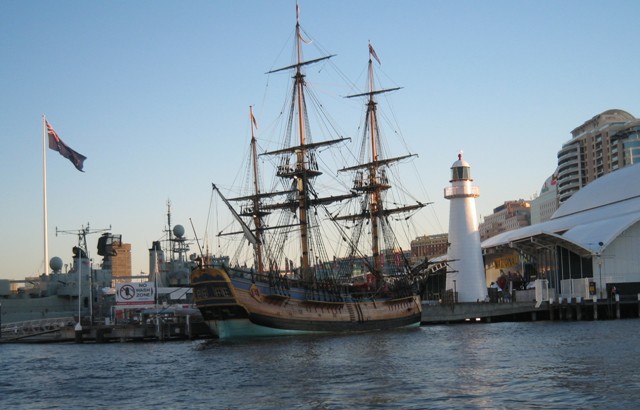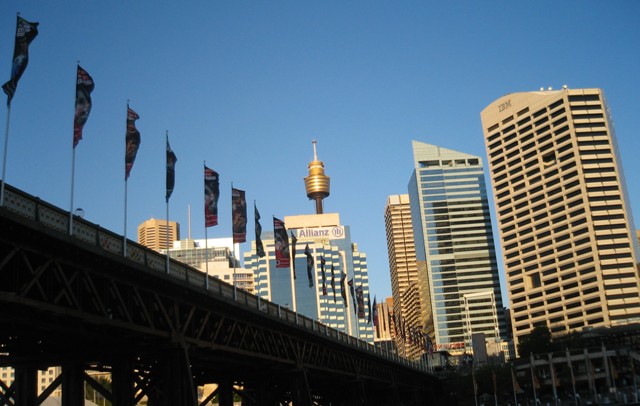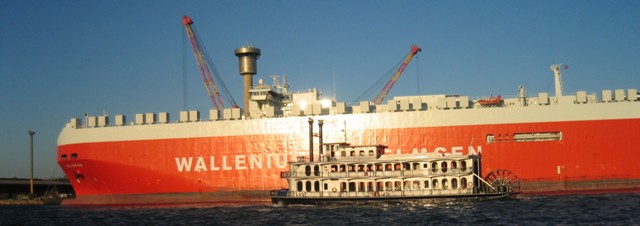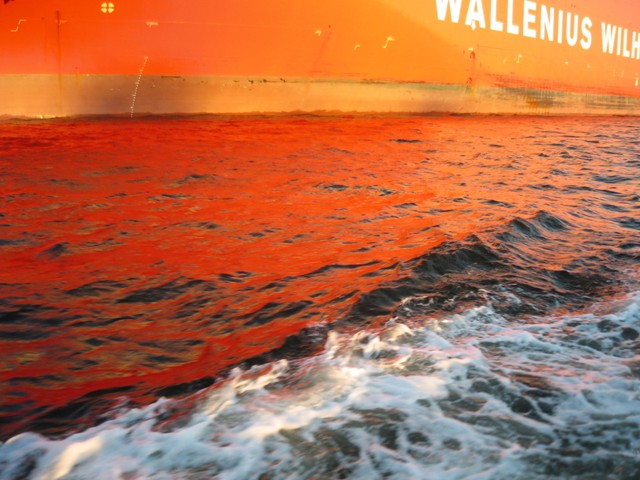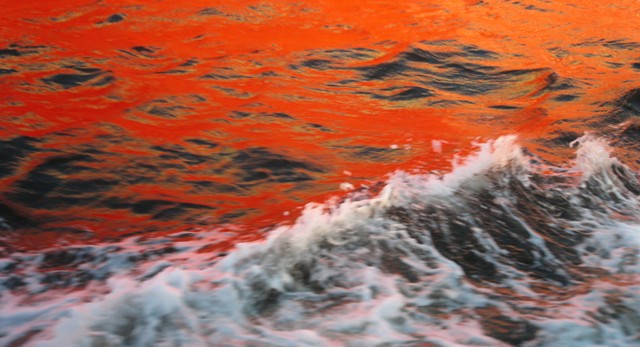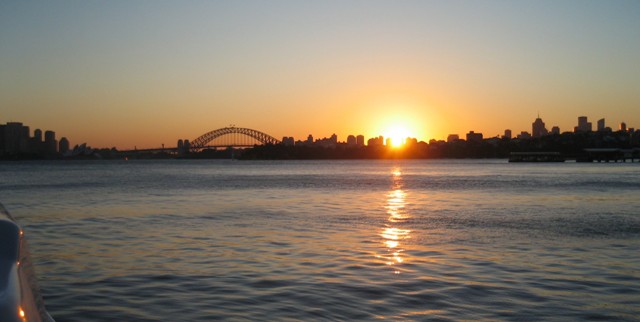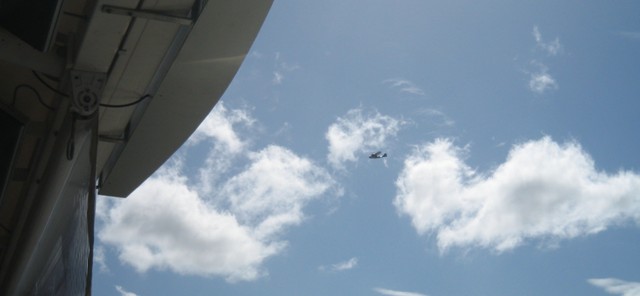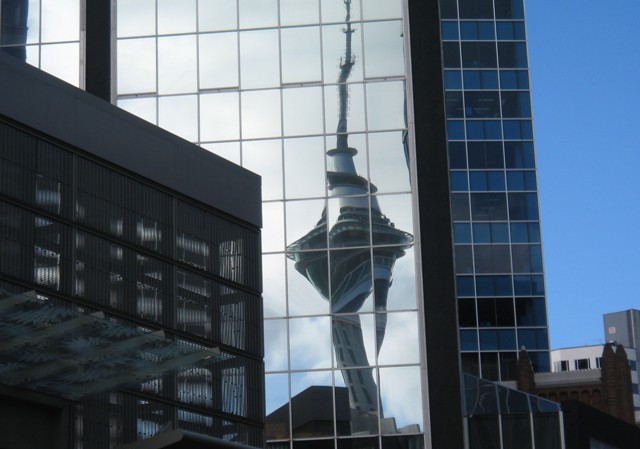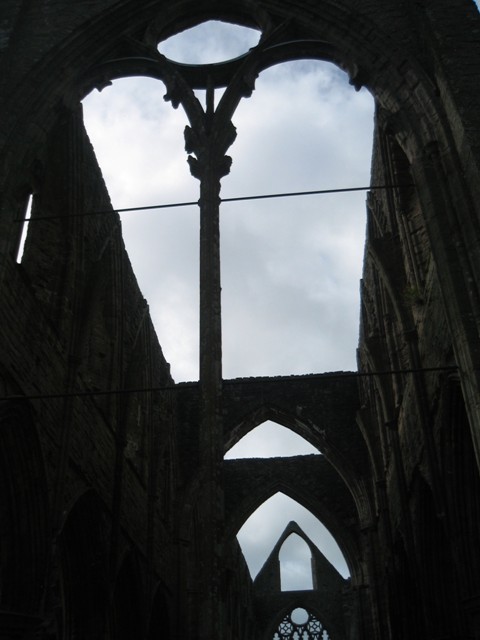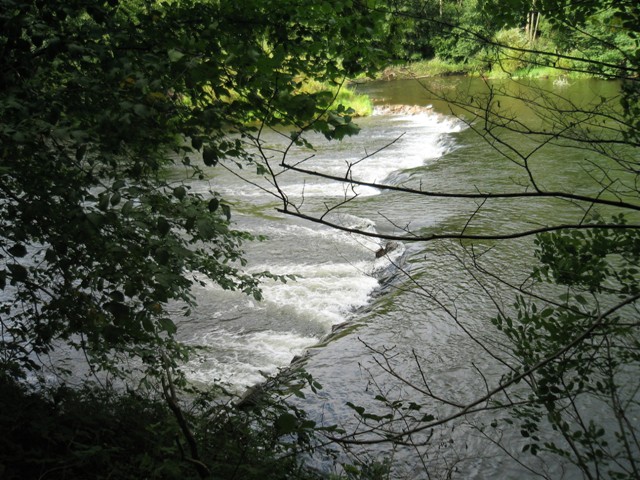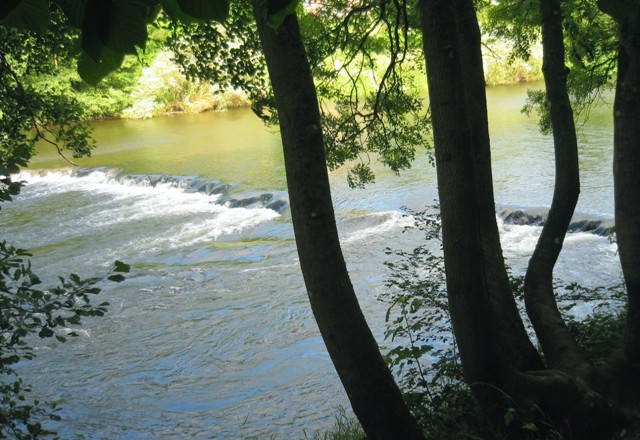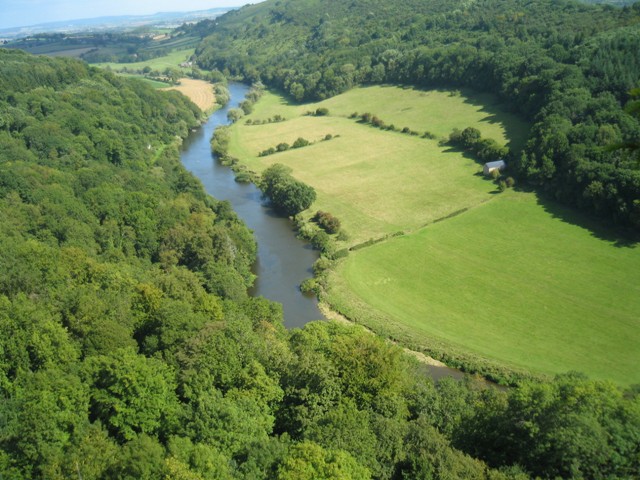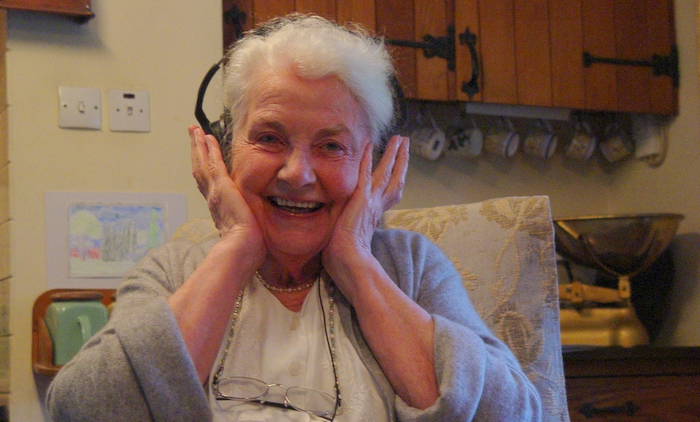Wednesday, January 31, 2007
LEARN FROM THE LEADERS + PHARMA FUTURES II
I don’t normally post plugs for SustainAbility projects or programs on this site, but two programs we have just put up on the SustainAbility website are rather exciting and worth mentioning.

First, we now offer a new online database on best practice in company reporting. Good sustainability reporting is fast becoming a basic requirement for all companies wanting to operate effectively and with credibility in the sustainability space. Building a great report can be a little easier if you learn from other companies – those with leadership experience and reputations – but this requires research few have the time to do themselves. SustainAbility and Flag have partnered to create Learn from the Leaders (http://www.sustainability.com/insight/article.asp?id=732), an online, searchable database and customized research tool that brings together years of experience reviewing, analyzing and benchmarking sustainability reports. Learn from the Leaders includes hundreds of best practice examples, and you can search them in dozens of different ways, including: (1) SustainAbility’s Global Reporters benchmarking criteria; (2) Global Reporting Initiative (GRI) guidelines; (3) Sector; (4) Region; (5) Issue; and (6) Format.

Second, there is Pharma Futures II (http://www.sustainability.com/news-media/news-resource.asp?id=738) whose new website is now on the SustainAbility homepage. This program is led by our Chair, Sophia Tickell. The healthcare operating environment is changing profoundly requiring creative responses from both management and investors. ‘Pharma Futures: Prescription for Long-Term Value’ is an ambitious investor-led dialogue between the pharmaceutical industry and its investors about how to manage a rapidly changing operating environment to deliver long-term value.
Pharma Futures is convened by pension funds Algemeen Burgerlijk Pensioenfonds (ABP Netherlands), the Ohio Public Employees Retirement System (OPERS, US) and the Universities Superannuation Scheme (USS, UK). As long-term owners of pharmaceutical companies, pension funds have a substantial interest in the continued profitability of a sector that has historically created considerable shareholder value. Pharma Futures recognises the vital contribution that the industry makes to society, through innovative breakthroughs in medical science, improvements to longevity and quality of life, and support to economies. Pharma Futures is centred around two, two day workshops, the first held in London in October 2006 and the second due to be held in New York in March 2007, bringing together the core working group of industry executives and investors.
Tuesday, January 30, 2007
TOMORROW’S COMPANY HITS 10
Across to Wragge & Co this evening with Geoff Lye for a celebration of the tenth anniversary of Tomorrow’s Company (http://www.tomorrowscompany.com). The idea behind this business-led think-tank is to help realise “a future for business which makes equal sense to staff, shareholders and society.” The temperature in the space used for the reception could hardly have been better suited for showcasing what a warmed world will be like. Geoff was a member of the original Tomorrow’s Company Inquiry Team, which reported in 1995. Mark Goyder noted in his speech that much of that report’s analysis has been subsumed into subsequent UK regulation. I’m a member of the ongoing Tomorrow’s Global Company Inquiry Team (http://www.tomorrowscompany.com/global). An altogether tougher challenge.
Monday, January 29, 2007
BUCKS FIZZING
Across to Bucks Club (http://en.wikipedia.org/wiki/Bucks_Club), apparently the origin of ‘Bucks Fizz,’ for an evening reception focusing on the coming year’s programme for the 21st Century Trust (http://www.21stcenturytrust.org/). Thanked (Lord) Chris Patten for agreeing to take a central role in The Environment Foundation’s planned October conference on ‘Democracy & Sustainability,’ to be held on the top floor of City Hall (http://www.london.gov.uk/gla/city_hall/index.jsp). Although set up by folk who wanted a less stuffy gentleman’s club, it was pretty stuffy this evening – with fires blazing at either end of the room. Happily, heard today that we (Environment Foundation) have been awarded a grant by The Esmee Fairbairn Trust (http://www.esmeefairbairn.org.uk/) for the Foundation’s 2007 programme.
I’M ON YOUTUBE
Odd. Nic Frances, Chairman of Easy Being Green, did a video cameo of me in Davos, posted at http://www.youtube.com/watch?v=KKauuqU-iUg
Sunday, January 28, 2007
A DIFFERENT CLIMATE IN DAVOS
After the busiest Davos I have experienced to date, I plan to post reflections piecemeal. But here are some fairly random photos and captions to start with. Overall, the event was the most productive since we first went in 2002, when the Forum convened in New York post-9/11 – with the number of serendipitous encounters this year running off the scale. The main focus: climate change (which really dominated the proceedings this year) and how to revive the Doha trade negotations.
I was running at 10-12 meetings a day throughout, but my biggest commitment was yesterday, when I had to facilitate a session on designing sustainable cities, with participants ranging from the Mayor of Dalian in China through Yann Arthus-Bertrand (the photographer whose images adorn the walls of our London office) and Google’s Larry Page. (When I mentjoned to Larry that we had ducked in to – and very rapidly out of – the famed Google party, because it was so noisy and crowded, he said he felt the same.) Two of my key speakers in the session were Lawrence Bloom, Chairman of EcoCities, and Amory Lovins of the Rocky Mountain Institute.
Then I went straight on to be one of several roving experts in a pressure-cooker session – run in rip-roaring style by Bloomberg’s Craig Copetas – forcing CEOs and others to adapt to real-time scenarios based around a series of melt-downs in the global energy system. Was in harness with the likes of Amory and Dan Esty of Yale.
Just one example of the serendipity effect, apart from being able to thank London Mayor Ken Livingstone for his congestion charge (which I enjoy as a cyclist) and for letting us have the top floor of City Hall in October for a conference the Environment Foundation is planning on ‘Democracy and Sustainability,’ was my visit to the One Laptop Per Child exhibition in the Hotel Panorama. This is the $100 laptop project developed by Nicholas Negroponte and others (http://www.laptop.org/). He was there, but busy in presentation mode. Then, the next day, I bumped into him, explained that we were covering OLPC in the book, and he agreed to vet.
Took the train to Zurich this afternoon, bumping into Pamela and Barry and Andrea Coleman of Riders for Health (http://www.riders.org/en/html/) at the station – and then travelling down the mountain with them. Arrived home to find my youngest sister had had a brain haemorrhage while we were away, the emails having come into the Apple at home rather than the laptop I was carrying. But it seems that she is well on her way to recovery. Something I always dread is family disasters while I am travelling – particularly to places like Australia.
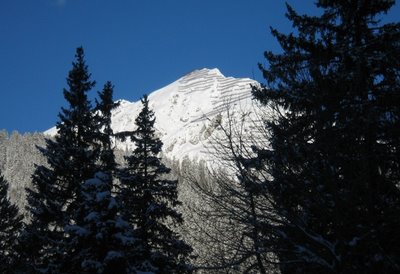
Magic of the mountains
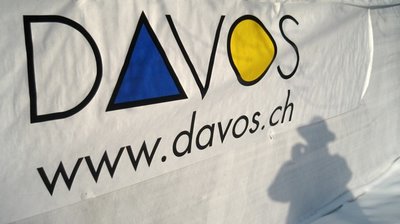
Shadowed in Davos – in my Indiana Jones hat
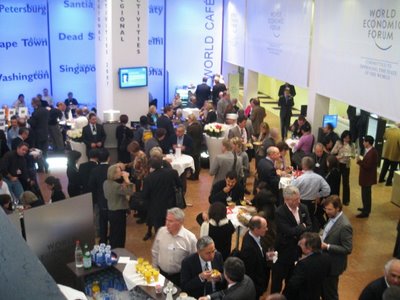
A break in the proceedings
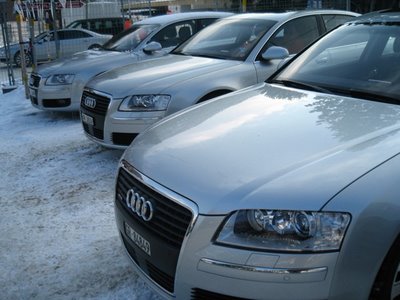
Some of the courtesy cars that we didn’t use
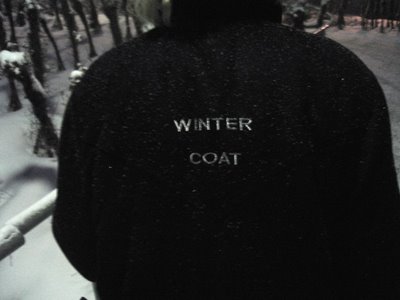
Elaine’s self-explanatory coat

One Laptop Per Child 1

One Laptop Per Child 2
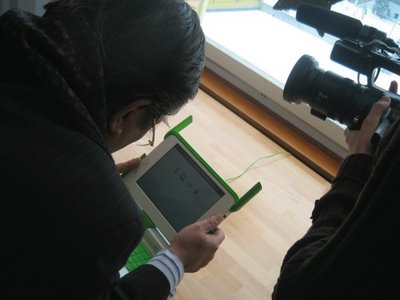
One Laptop Per Child 3
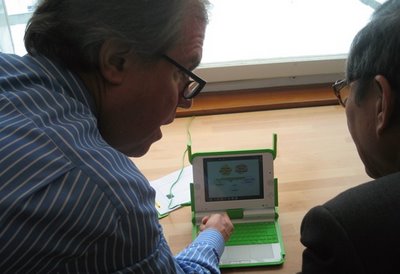
Nick Negroponte presents
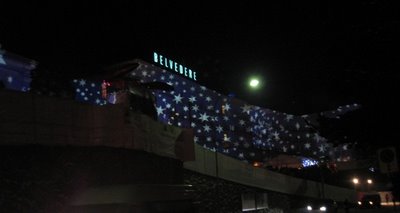
The Belvedere, where we ducked in – and out of – the Google party
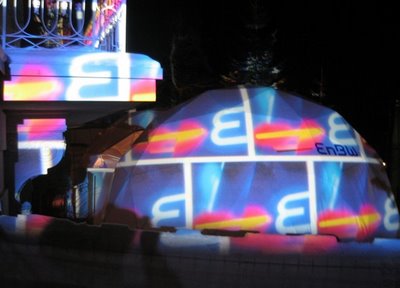
Belvedere 2
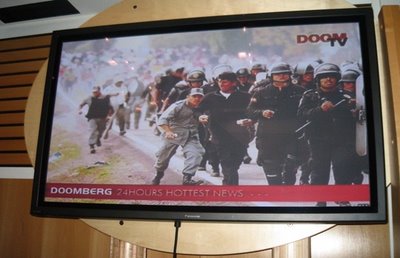
‘Doomberg’ 1
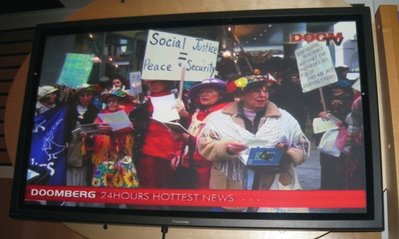
‘Doomberg’ 2
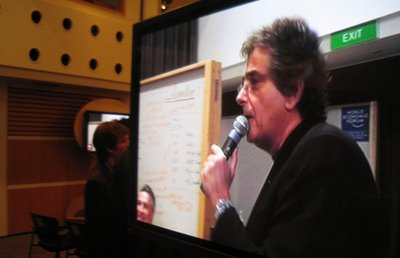
Craig Copetas in full flow
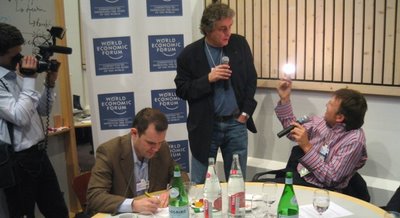
Nic Frances of Easy Being Green lights up
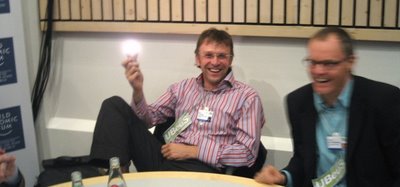
Nic 2

Police clearing up as the event winds down 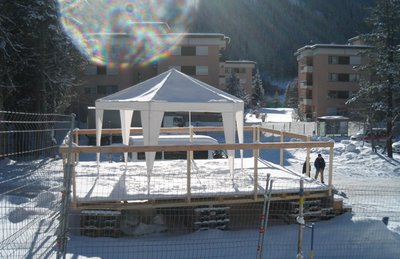
Empty media stand-up interview platform 
Waiting for the train 
Serendipitous encounter with Barry Coleman and Pamela 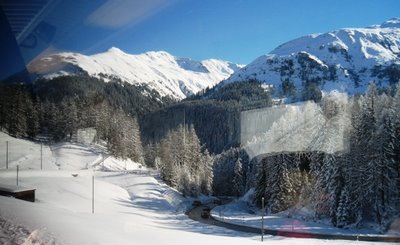
Snowscape 
Barry and Andrea Coleman of Riders for Health 
Pamela
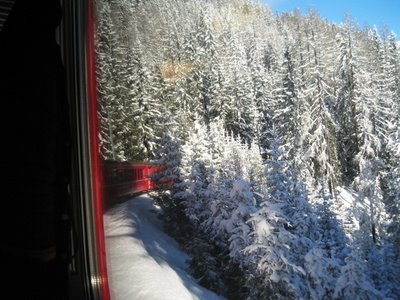
Train snaking
Thursday, January 25, 2007
BBC INTERVIEW ON BIOFUELS
Did an interview from a studio in Davos for BBC4’s ‘Today’ Programme this morning, on biofuels. Somewhat squeezed for time, so unable to challenge the car industry’s current stand on emissions in quite the way I would have wanted – but such interviews always reach an extraordinary range of people (http://www.bbc.co.uk/radio4/today/listenagain/thursday.shtml go to 08.52 am).
Tuesday, January 23, 2007
SCHWAB FOUNDATION SUMMIT 07
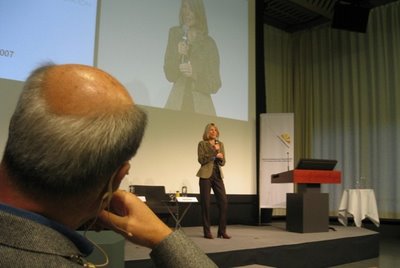
Dr Mechai Viravaidya (‘Dr Condom’) and Pamela Hartigan
Elaine and I caught a train this evening to Davos, after two days at the latest Schwab Foundation social entrepreneurs summit, held at Swiss Re’s Rushlikon complex, overlooking Lake Zurich. Among other things, I chaired a plenary session on the business case for social entrepreneurship. My speakers were Debra Dunn (ex-senior-VP at HP and now a board member at The Skoll Foundation), Paul Fletcher (senior managing partner at Actis Capital), Will Rosenzweig (MD, Great Spirit Ventures) and Frans van Scaik (managing partner, Logispring). Overall, a truly extraordinary gathering. And it now looks as if Swiss Re will co-host the event on an annual basis.
We travelled to Davos with Isaac Durojaiye, a big man, Nigerian, with a huge laugh – which at times seemed to rock the train on its rails. He’s in the what he delicately describes as the “shit business,” running DMT Mobile Toilets. Once he was employed as bodyguard to the late Chief M.K.O Abiola. His nickname, ‘Otunba Gadaffi,’ originates from that time. As bodyguard to Chief M.K.O Abiola, he was extremely protective, so people would ask, “Why do you behave like Gadaffi?” (Otunba means “high chief.”)
As the Schwab Foundation notes: “DMT Toilets came about as a result of a request from Chief M.K.O Abiola, who wanted to have a large celebration for his son and charged Durojaiye with the task of organizing security. Durojaiye immediately noticed the lack of toilets at the venue and found that no toilets could be hired in Nigeria for such occasions. In fact, there were hardly any to be found anywhere in the region. DMT’s plan is to reach every part of Nigeria and beyond. His business model was inspired by Dr Bindeshwar Pathak of Sulabh International in India, who has set up about 1.5 million toilets across the country.” Isaac’s achievements give me hope even in a country like Nigeria.
More: http://www.schwabfound.org
Saturday, January 20, 2007
AFTER THE STORM
As Elaine and I took a quick walk around Barnes this evening, in between bouts of working on the book, we came across a tree that had been sawn into great logs by the river wall – alongside a car that had been pancaked. The ‘Great Storm’ hit on Thursday and I am rather glad I wasn’t on the bike that day. Might have ended up in Kansas the way it was blowing by the time we were doing the Environment Trustees meeting: the great plane trees behind the office were gyrating wildly and a TV aerial across Bedford Row was going like a hula dancer.
HRANT DINK
Robert Fisk is one of my favourite journalists, with his remarkably insightful coverage of the Middle East and environs. But his story in today’s Independent was particularly grisly (http://news.independent.co.uk/europe/article2169190.ece). He reported on the assassination in an Istanbul street of Hrant Dink, a journalist who has been courageously trying to get Turkey to admit its complicity in the unbelievably brutal massacre of the Armenians in 1915. This is an issue I have brought up with Turks I have met for decades, including Turkish taxi drivers in places like Berlin who themselves are no strangers to racial enmity, and have almost always had a defensive-shading-through-to-pretty-virulent reaction. In my mind there is absolutely no way Turkey can become a member of the EU until it comes clean on the twentieth century’s first holocaust.
Friday, January 19, 2007
UP FROM THE UNDERGROUND
After a slightly manic day, working on our report on the future of globalisation and getting ready for Zurich and Davos next week, I caught the Tube from Holborn to meet Elaine and Sally and Dick Osberg for an early dinner at The Wolseley in Piccadilly. Then the train ground to a halt in the tunnel. Perhaps it was only 15 minutes before a voice came on the tannoy to say that someone had gone onto the lines at Piccadilly Circus station, but it always seems an eternity when you are in a hurry.
After another wait, the train inched into Covent Garden station – from whence we all herded into the exit passages and then had to climb the endless spiral stairs to escape. No taxis, so I walked as fast as I could through an almost-solid-state-mechanics Leicester Square, ducking down Jermyn Street to avoid the press along Piccadilly, and turning up maybe 25 minutes late. Happily Elaine had made it more or less in time. Joyous conversations, wonderful food, but I couldn’t help wondering what it was that had had that poor soul plunging from the platform?
Thursday, January 18, 2007
GUTTER LANE
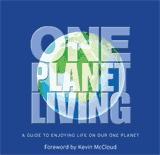
I do love the snickets, lanes and alleyways of old London. Today, in wild winds and driving rain, I walked up Gutter Lane – recalling the spat between Cooper Brothers and, if memory serves, the old GLC. The firm wanted to get the name of the lane changed to Cooper Lane, but the riposte was that they should change their names to Gutter Brothers.
Was on my way to a meeting of the WWF UK Council of Ambassadors at Dresdner Kleinwort Benson’s offices in Gresham Street. Some fascinating sessions on WWF’s One Planet Living accounting methodology (http://www.wwf.org.uk/oneplanetliving/index.asp) and on its work on the world’s water economy. Then raced back by Tube to SustainAbility to chair a meeting of the Trustees of the Environment Foundation, idiotically leaving my umbrella and WEF programme in the conference room. (Sir) Geoffrey Chandler was in typically vigorous form, leaving my shins elegantly bruised – and, in the process, helped us develop a high-energy plan for the rest of 2007.
SNEAKY PETE KLEINOW


Obituaries again, and today it’s Sneaky Pete Kleinow, who played pedal steel guitar the only time we saw The Byrds, at Middle Earth in Covent Garden. This was the Sweetheart of the Rodeo era, with Gram Parsons in full flow. Later, Sneaky Pete played alongside Parsons with another of my favourite bands of the late 1960s, The Flying Burrito Brothers. (He’s the one in black.) Had no idea he had done animations for films like The Right Stuff and The Empire Strikes Back.
BREAKFAST WITH JULIA
Got back late last night after doing the audio interview with Peter Senge, but only just behind Julia Hailes, who was staying overnight with us. Appropriate timing, really, since it is almost exactly 20 years since we founded SustainAbility – in March 1987. She had arrived on my doorstep late in 1986, hot-foot from travelling in South America. At the time, I was still involved with Earthlife, at 10 Belgrave Square. Extraordinary to think back to all the travails of that time – and to type this blog entry in the back study where she and I sat back-to-back for two-and-a-half years while we cranked out The Green Consumer Guide and a couple of its successors. Her update, The New Green Consumer Guide, is due out in May. As she left to see the book designer this morning, the wind howled and thumped through the trees outside. Am hoping that I’m not borne off to Kansas when I leave in a hour or so for a meeting of the WWF Council of Ambassadors. (WWF, incidentally, played a key role in funding 1988’s Green Consumer Week, which we organised to coincided with the launch of The Green Consumer Guide.)
Wednesday, January 17, 2007
CONVERSATION WITH PETER SENGE
Interesting 1.5 hour audio interview this evening with Peter Senge of the Society for Organizational Learning this evening (http://www.solsustainability.org/upcoming.htm). A little more broad ranging than I had imagined, but we are talking about doing another which zeroes in on particular sectors and issues. A CD of the interview will be available shortly.
Sunday, January 14, 2007
BUY ARNIE, SELL BROWNE
Seismic shocks are shaking the once-and-future pantheon of green heroes. BP’s Lord John Browne has announced his early departure as chief executive, a few days before the publication of the Baker report on the company’s US disasters. With Russia now seen as likely to bully BP in the same that it did Shell, some see the BP miracle unravelling. But, whatever his flaws, a hugely positive element Browne’s legacy will be his extraordinarily courageous speaking out on the issue of climate change in Stanford and Berlin, as long ago as 1997. Meanwhile, Arnold Schwarzenegger, Governor of California, has launched the world’s first low-carbon vehicle fuel standard, a move that is sending shock waves through the oil industry. His goal: to achieve freedom from “dirty oil and from OPEC.” Who, back in 1997, would have predicted all of this?
Wednesday, January 10, 2007
TO THE LIGHTHOUSE
After a fascinating convening of social entrepreneurs who won this year’s Fast Company Social Capitalist Awards, conclusions of which I’ll try to summarise when I’m back in London for the Skoll Program area of the SustainAbility website, we all bussed over to The Lighthouse, at Chelsea Pier, overlooking the Hudson, for a reception and dinner. Hunter Lovins did an extraordinarily good job of compering, in her somewhat unusual combination of range hat and Arab headdress.
I was thrilled to hear that Astrid Sandoval – who is editing the book Pamela Hartigan and I are doing for Harvard Business School Press – had come up with a list of possible new titles, something we had been slightly stalling on. When her colleague Kirsten Sandberg arrived, having received the list a short while earlier, it was almost instantaneously clear we had a title – and one everyone loved. It certainly has legs.
Later in the evening, Pamela announced the winner of the 2007 ‘Outstanding Social Entrepreneur’ Award from The Schwab Foundation, which she runs (http://www.fastcompany.com/magazine/111/open_socap-partners-firstbook.html).
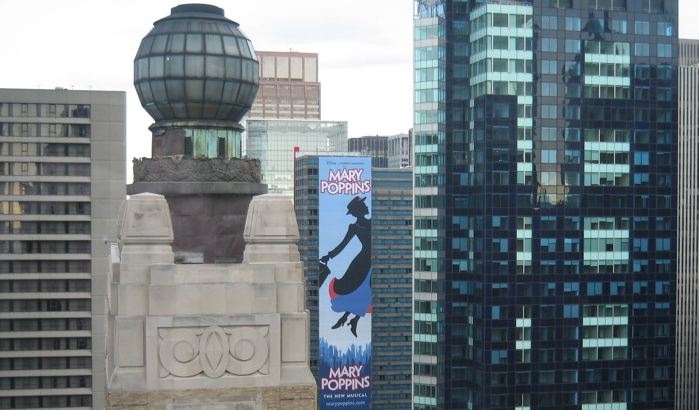
Mary Poppins passes by
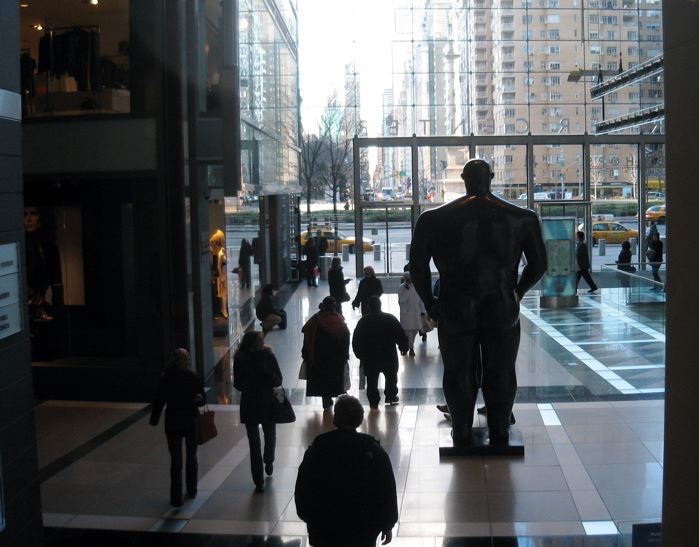
New York man – note fellow to his left
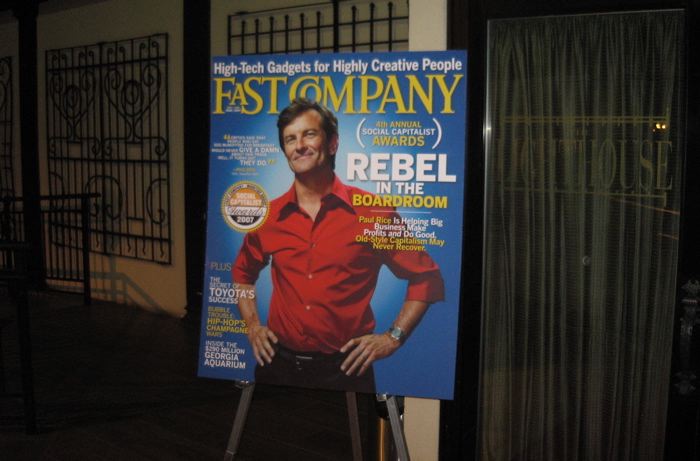
Paul Rice outside The Lighthouse
Tuesday, January 09, 2007
BIG APPLE, GREAT STINK
Arrived yesterday afternoon at JFK – after star-crossed almost-collisions with both Charles Dance and Stephen Fry as I made my way throughHeathrow. Took a cab in to New York, BlackBerrying as I went – with a driver who clearly thought he was racing at Brands Hatch. Result was a number of emails sent to people around the world which were, to put it mildly, challenged on the spelling front. The driver’s cell phone had a ring tone that was the Muslim call to prayer, which livened things up considerably.
Then across to The Algonquin Hotel for a drink with Jed Emerson, his girlfriend and Pamela Hartigan. First time I had been there. One thing it’s known for is the ‘Round Table.’ After World War I, Vanity Fair writers and Algonquin regulars including Dorothy Parker began lunching there. In 1919 they convened in the Rose Room to welcome back “acerbic critic” Alexander Woollcott from his adventures as a war correspondent. Intended as a put-down of Woollcott’s pretensions (the Algonquin’s website notes that he had the annoying habit of beginning stories with, “From my seat in the theatre of war…”), it proved so enjoyable that it became a regular event, strongly influencing writers like F. Scott Fitzgerald and Ernest Hemingway. Though society columns called them the Algonquin Round Table, they called themselves the Vicious Circle.
One less vicious subject of our own mini-roundtable-with Chardonnay: yesterday’s Great Stink of Manhattan. Happily, it was news to me. But the New York Times front page story this morning is titled: “A Rotten Smell in Manhattan Raises Alarms and Questions.” People even put off smoking breaks, for fear of detonating an explosion. To date, no-one seems to know what the cause was. Some people, apparently, were reminded of a similar incident in 2005, though the smell that time was not of sulphur compounds and mercaptans but of maple syrup, on separate days. Again, no-one ever worked out what the source was.
Another subject of conversation: how unseasonably warm it is here. Much of my time in the rocketing back seat of the cab was spent peeling off one layer of clothing after another.
Saturday, January 06, 2007
GOING GREEN
One of the things we do at SustainAbility is track the waves of societal pressure on governments and business. A couple of years back, I got a strong sense that another wave was building – and it’s certainly splashing all over the UK media at the moment. The ‘Money’ section of The Times today is yet another case in point, covering the greening of energy, housing and money. Even started a book in 2004, The New Green Consumer Guide, with Julia Hailes, but she took that over while I concentrated on the book with Pamela Hartigan on social and environmental entrepreneurship. Finished a major rewrite of that on Thursday, with just one chapter still to go. Hoping to discuss with editors and Pamela in New York next week. Meanwhile, it will be interesting to see how long this new green wave runs. My sense is that it will extend at least through the end of 2007, though much will depend on what happens in terms of the health of the dollar, recession, the Middle East, the price of oil, terrorism threats and so on.
A DIFFERENT PLANET
Apart from the war in Iraq and the execution of Saddam Hussein, no subject has enjoyed more oxygen this year than the vexed issue of climate change. As I recalled at a recent event on the climate prospect, I wrote a report on climate change for the Hudson Institute as long ago as 1978, predicting it would be a major threat by the late 1990s. I wonder what I would have made then of today’s newspaper headlines? An article carried by The Independent on 30 December, for example, was headlined: ‘Vast ice shelf collapses in the Arctic.’ The news about the Ayles ice shelf’s becoming a free-floating ice island, apparently over five times the size of central London, coincided with leading climate scientist James Hansen saying that the Earth is being turned into “a different planet.”
A few days earlier, the Financial Times had noted the likelihood that polar bears will be reclassified as a threatened species, following an announcement by the US Department of the Interior. Interestingly, however, the Secretary of the Interior said that climate change was beyond his remit. A bit like saying terrorism is beyond his remit, although anyone viewing the world from the perspective of 2050, say, might conclude that this was a case of the developed world practising a form of ecological terrorism at the expense of the rest of future generations.
Then, on January 4, the Financial Times reported that new data from Australia’s Bureau of Meteorology confirm that the country is now experiencing the effects of global warming more profoundly than other parts of the world. Poetic justice, in a way, given the country’s alignment with the Bush administration on all matters climatic. True, the Howard government has had much to say on the increasingly severe water shortages across the island continent, but the penny (or cent) has yet to drop in terms of the links between water, climate and human and industrial energy consumption.
Meanwhile, today’s Times reports happier news for butterflies in the UK, summed up in its headline: “‘Climate change brings butterfly invasion.’ The number of butterfly and moth species migrating to Britain for the summer has increased four-fold in the past 25 years, we are told. With each degree of temperature rise resulting from global warming, scientists at the Monks Wood research centre have determined, 14 extra species can be expected to cross the Channel in search of new breeding territory. The scientists note, however, that pest species will likely follow suit.
In Italy, according to The Guardian today, malaria is making a comeback, having been eradicated by 1970. Venice is worst-hit. Other diseases enjoying a new lease of life in the country as conditions warm are encephalitis and visceral leishmaniasis. By way of context, of six sustained droughts in Italy in the last 60 years, four have occurred since 1990.
As a result of such trends, according to today Financial Times, northern Europe could enjoy Riviera-like conditions, while the Mediterranean could face crippling shortages of water and of its economic lifeblood, tourism, by mid-century. A new report from the European Commission also envisages growing levels of atmospheric carbon dioxide helping to acidify the oceans, seriously impacting fish stocks. On the somewhat more hopeful side, the report concludes that it would only cost 0.19 percent of the EU’s GDP annually to cut emissions by 25 percent. Sounds more than worth doing, though some scientists say we should be aiming for cuts of 60 percent and over.
KHARTOUM
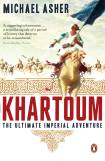
Finished Michael Asher’s astonishingly well researched and written book Khartoum this morning, which tells the story of the events leading up to the death of General Gordon and, many years later, to the battle of Omdurman. The description of the British Army’s last cavalry charge, in which Winston Churchill took part as a young subaltern, portrays a very different reality than that I imbibed at school in the late 1950s. Astounding what can happen in just two short minutes, enough to win three VCs – and I well recognise the way that time can slow down dramatically under stress, as It has done a number of times as I have flown over my handlebars. A slightly different matter, though, when you are surrounded by hundreds of dervishes wanting your guts for garters.
I remember being very proud in the 1960s that Churchill was a distant cousin, via our great-aunt Helen. And I recall with some embarassment one evening when we were with her, her extraordinarily long white hair a thing of wonder and beauty, at our grandmother Isabel Coaker’s apartment in Pont Street. Great Aunt Helen asked to hear what my brother Gray and I were playing on our guitars at the time. So we popped one end of her hearing aid in one of our guitars. God only knows what it must have sounded like to someone who would have been alive when Omdurman was being fought. Pretty much the same, I suspect.
Must drop a note to Eleo Gordon, the book’s editor. Elaine and I went to stay with her for a couple of weeks in her tiny Pimlico flat in the early 1970s, when I was doing my M.Phil, and we ending up staying 18 months. We, at least, enjoyed it enormously. As I did this book. The great sweep of history is combined with a sensitive handling of the clash of cultures and an even-handed treatment of the soldiers on both sides. In a last-minute twist, Asher links those seemingly-far-off events and people with Osama bin-Laden and the 9/11 attacks and what has been happening in The Sudan, Afghanistan and Iraq. Required reading for anyone who wants to get some sort of grip on the world we find ourselves in. If, God forbid, I were to live into my nineties like Great Aunt Helen, we would be pushing towards mid-century, in a very different world.
Friday, January 05, 2007
U864
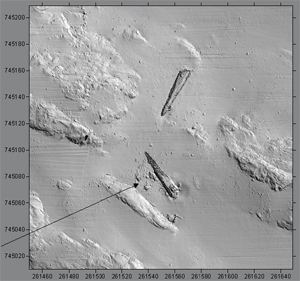
Wreck of U864
http://bellona.no/imagearchive/3e34014a5907971417b60916e4631d04
Watched BBC2’s The Hunt for U864 this evening – recalling the only known case in which one submerged submarine sank another. The U864, on her maiden voyage, had been carrying advanced jet engine parts from Germany to Japan, but code-breakers at Bletchley Park learned about ‘Operation Caesar’ and sent a V-class submarine, HMS Venturer, to intercept off Norway. The story was interesting enough for the bad luck that had dogged the German boat, the extraordinary gamble that the British captain took in firing all four of his torpedoes (three missed, the last one – they think it was – hit), and the amazing caculations that allowed Lieutenant Launders and his team on the Venturer to guess where the zig-zagging U864 would be at a particular moment.
A surviving able seaman from the British boat recalled the relief they felt when they heard the U-boat breaking up, but noted the wave of sympathy that quickly followed for those who had died. But they might have been even more concerned had they known what the resulting wreck would be up to over 60 years later. In short, as The Times had put it on December 19, it has become a “toxic timebomb.” The U-boat, which today’s scans show had broken in two, had been carrying 65 tonnes of mercury in 1,857 cannisters, which are now highly corroded. So great is the pollution threat that there are now plans to bury the wreck, 152 metres (500ft) down, with up to 100,000 cubic metres of sand and gravel – or maybe even concrete. One more example of how some of the technologies we use can result in quite unexpected impacts several generations later.
Wednesday, January 03, 2007
WILD LAW – THE PHOTO
Because I’m usually behind the camera, I don’t often get a look-in as far as photos are concerned, but here’s one I received today, of speakers and others involved in November’s Wild Law conference, which I chaired.
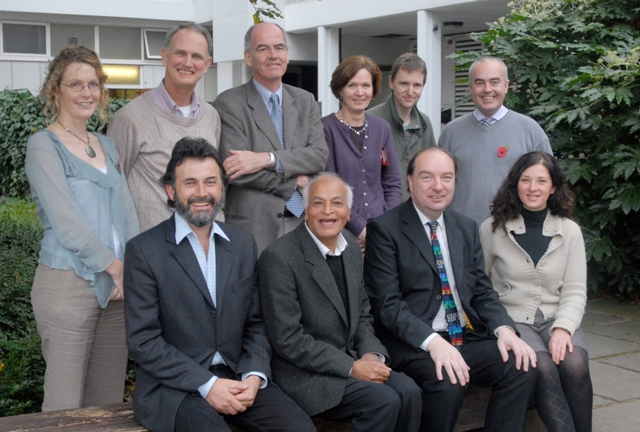
Left to right, back row: Kirsty Smallbone (Brighton University); Herman Greene (Center for Earth Jurisprudence); John Elkington (Chair); Vicki Elcoate (UK Environmental Law Association, or UKELA); Simon Boyle (UKELA and Argyll Environmental); Peter Kellett (UKELA vice-chair and Environment Agency)
Front row (speakers): Cormac Cullinan; Satish Kumar; Norman Baker MP; and Begonia Filgueira.
Monday, January 01, 2007
007
So, here we are, another new year. But just reminded by a friend in Japan that this isn’t any old year. March 2007, he notes, is SustainAbility’s twentieth anniversary. February, too, marks Elaine’s sixtieth birthday.
What an extraordinary journey it has been: so much done, so much still to do. Am sitting in the back study where so much of the early work – including The Green Consumer Guide – was done by Julia (Hailes) and I. Today, coincidentally, is also the birthday of her eldest son, my godson. Glorious Moon this evening as I wind down from another day of book writing.
New Year’s resolutions? Having just fired off an email saying yes, if they’ll have me, to an event that will cut into my planned month-long sabbatical in April, one well-intentioned resolution that is already wobbling is to spend more time on friends and family. But urgency underscored by news today that an old family friend fell and broke her leg a few days back, aged 80. So easy to put off seeing people because of work presssures, so seductive to let that bigger world override more local, intimate calls on time. Perhaps it will all be different when the book is done …?


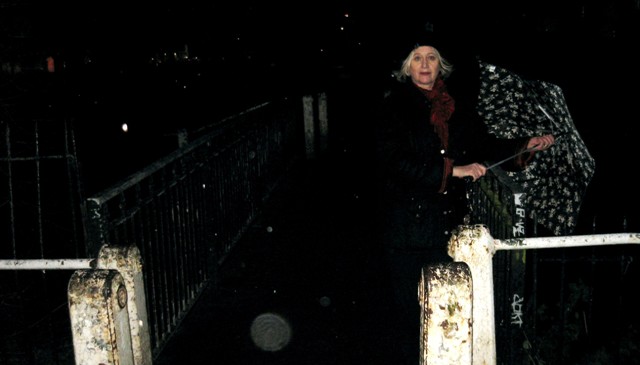
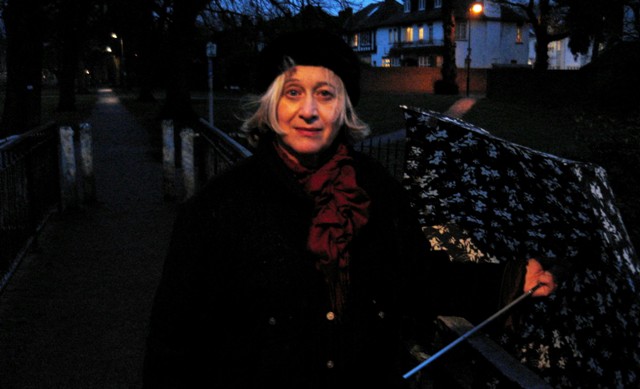

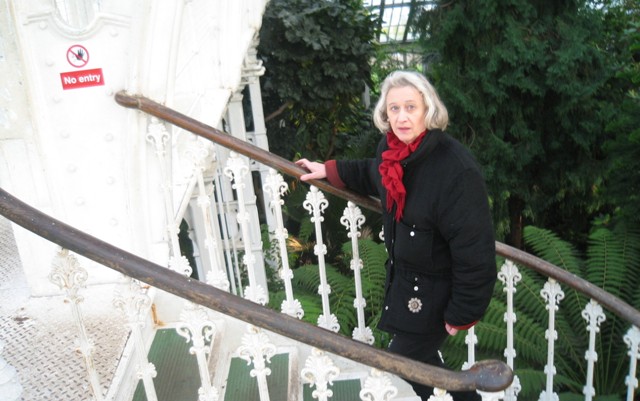
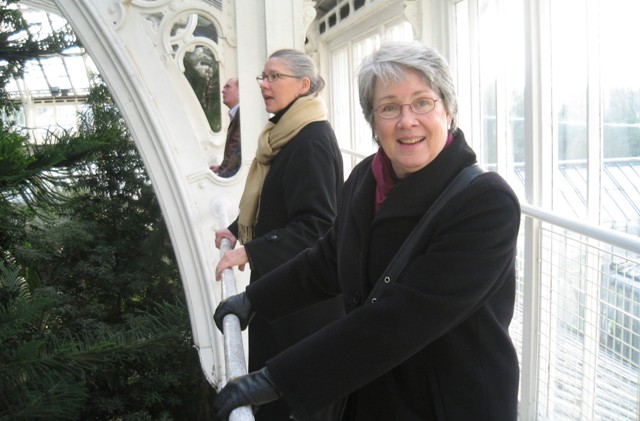


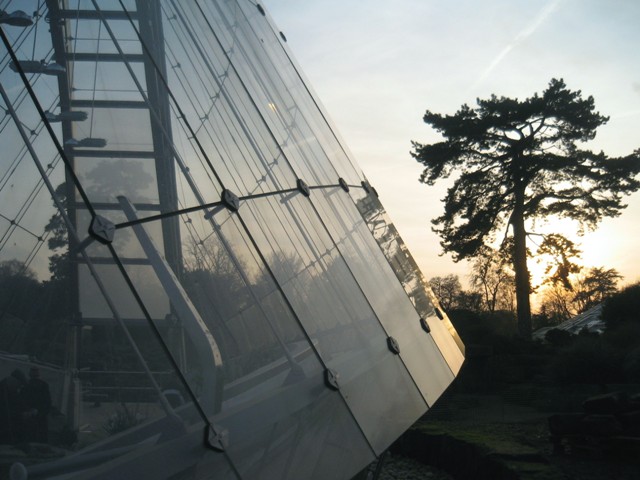

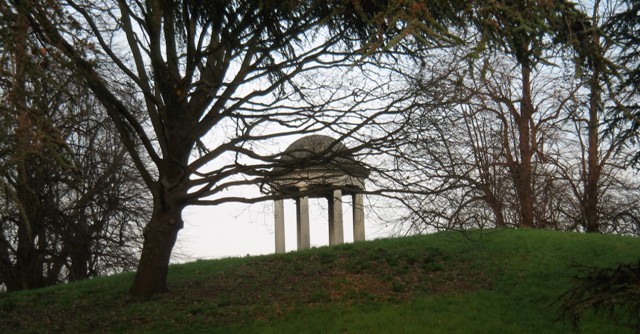

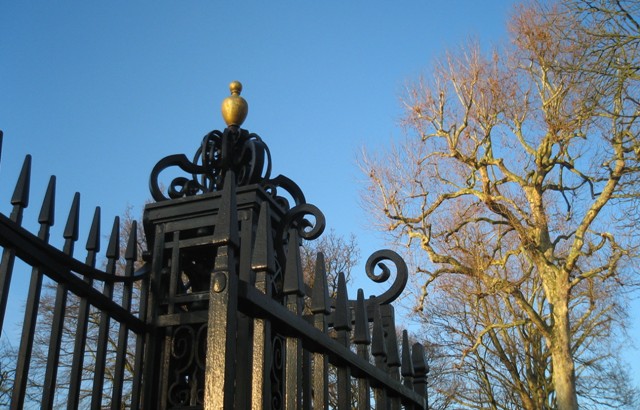


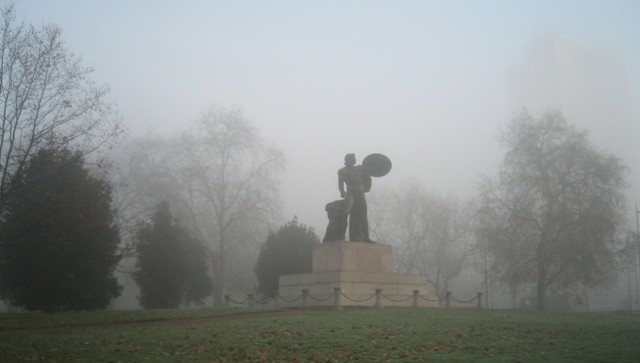

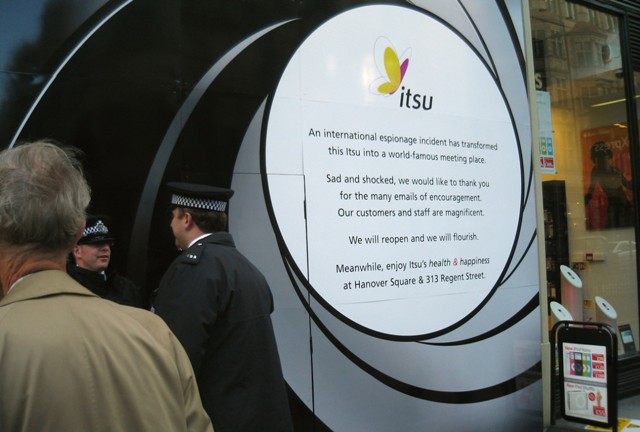
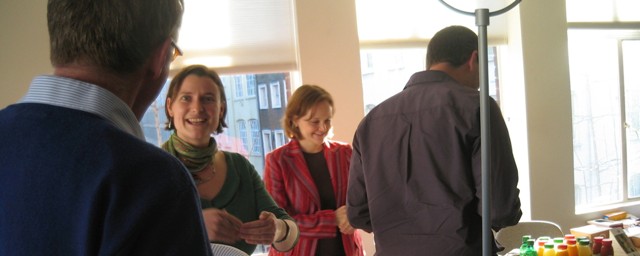
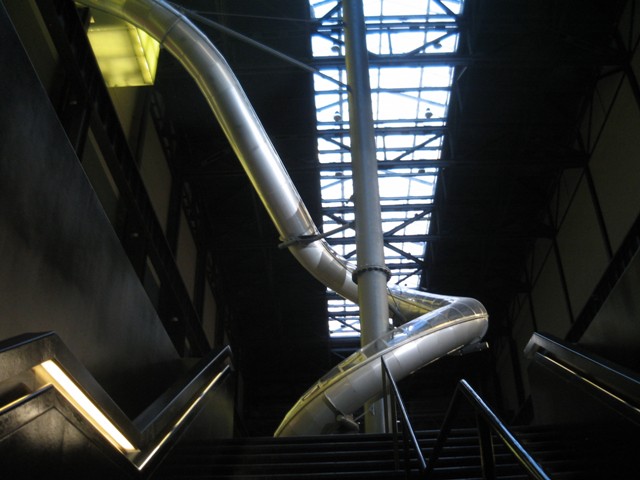
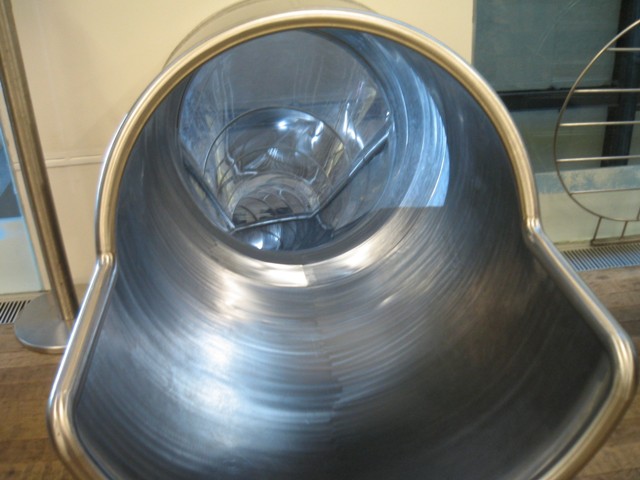
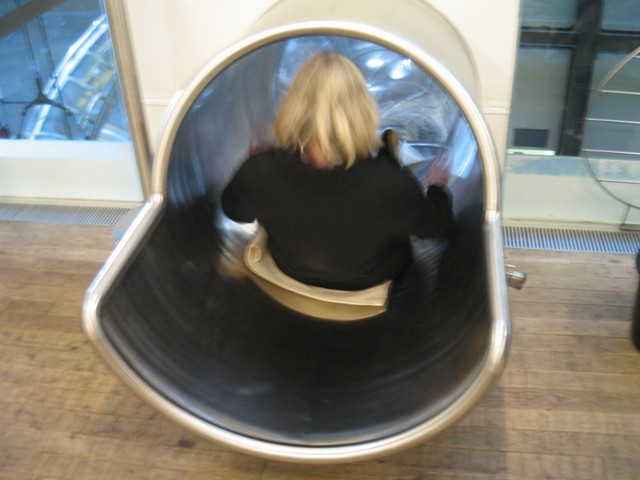
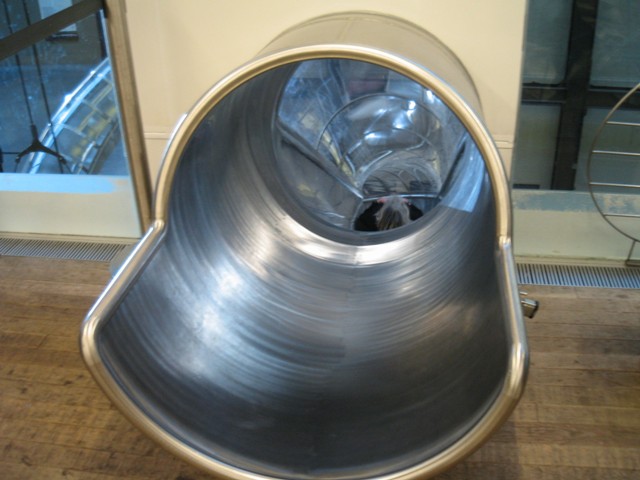
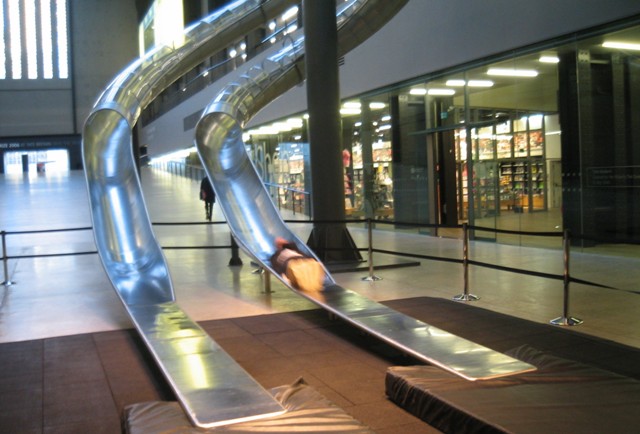
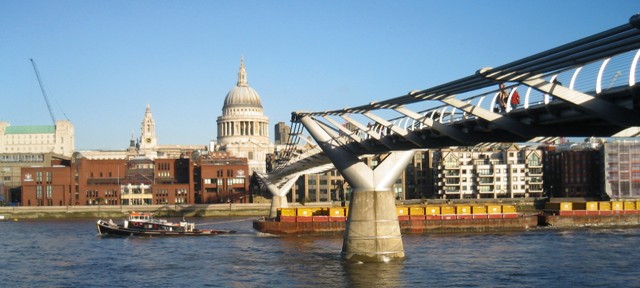

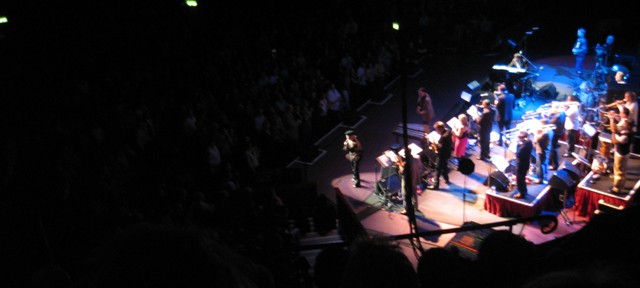

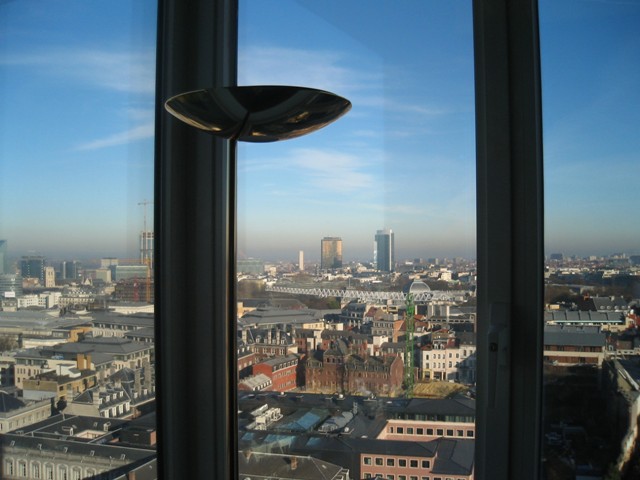
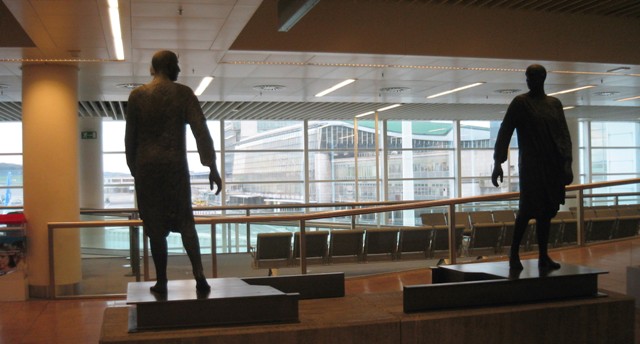

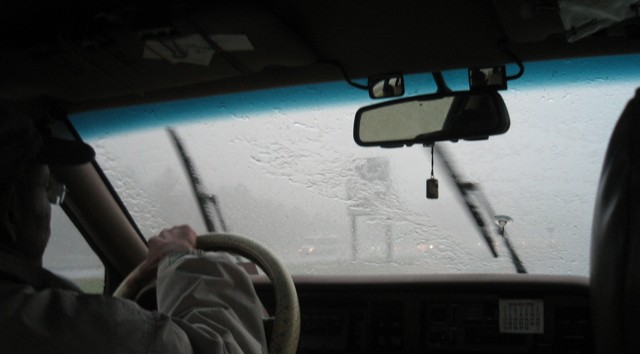
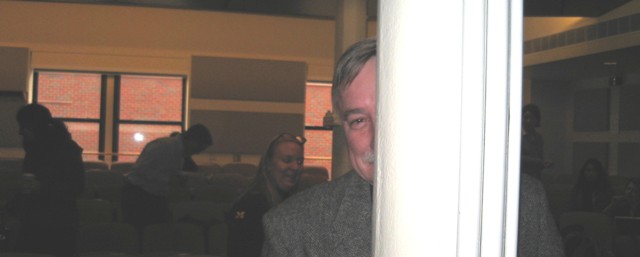
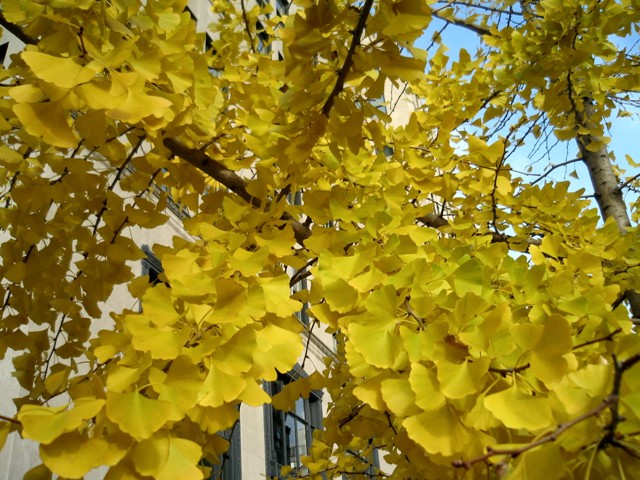
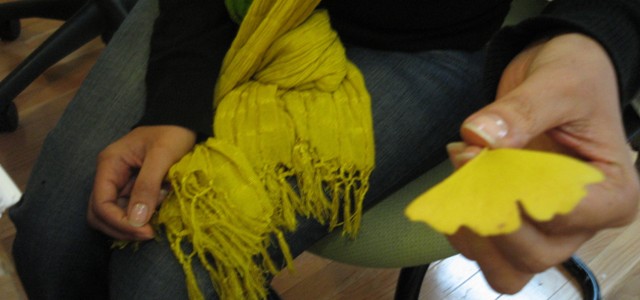


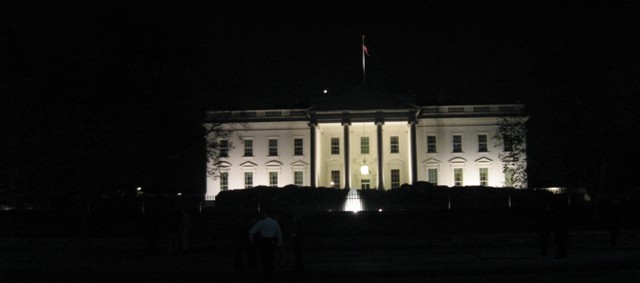
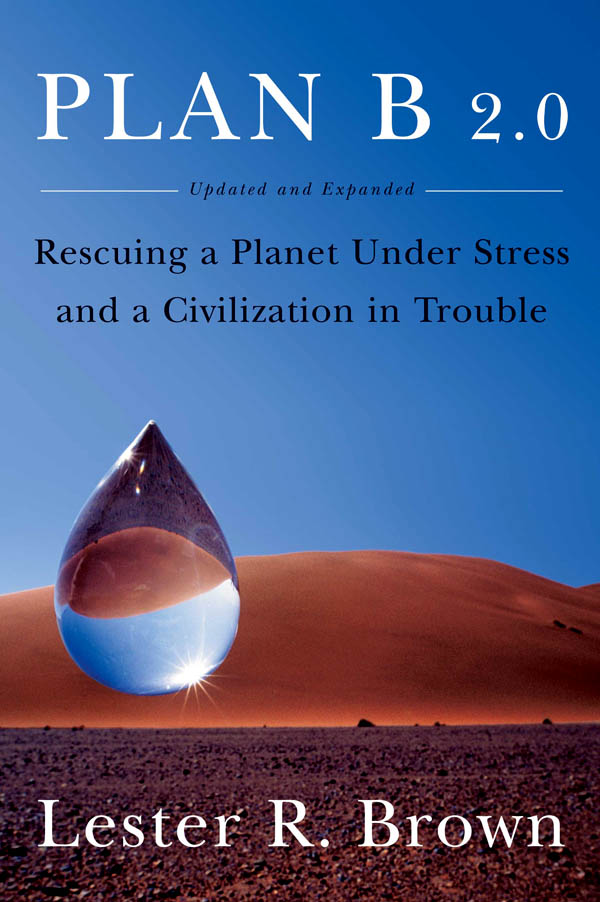
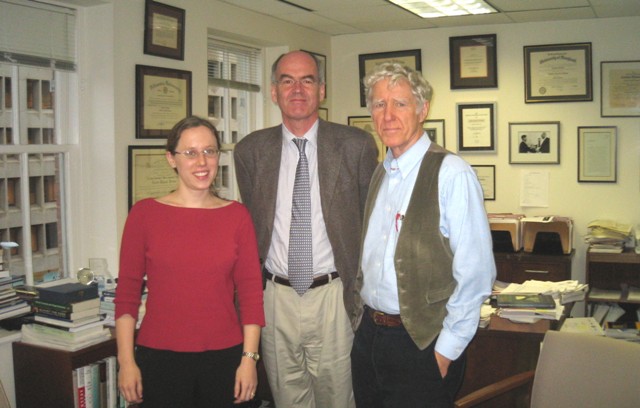
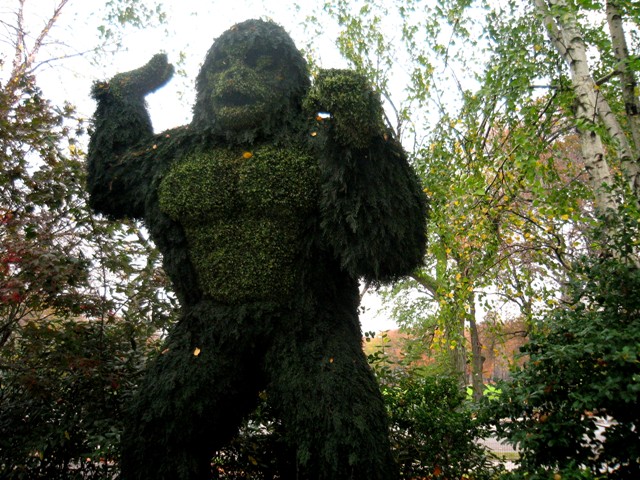

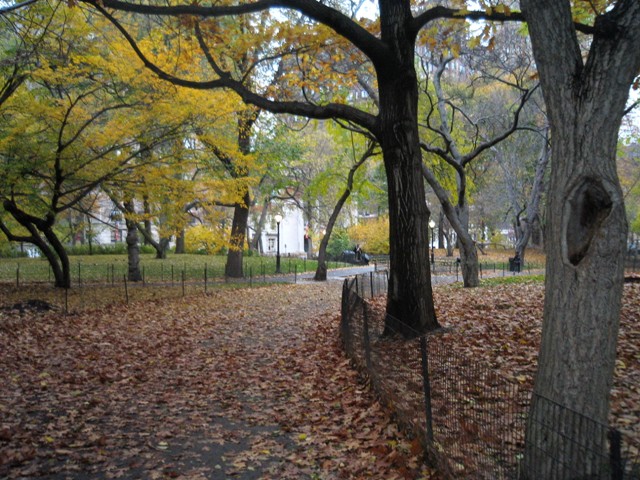
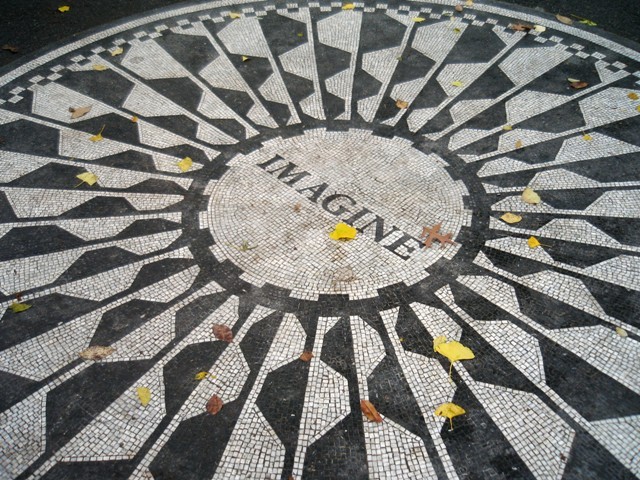
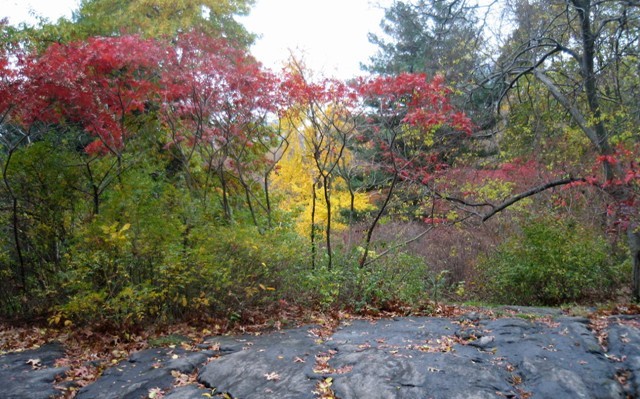
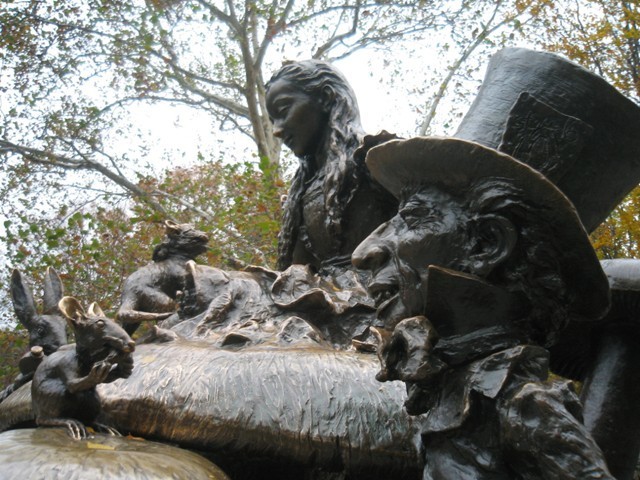
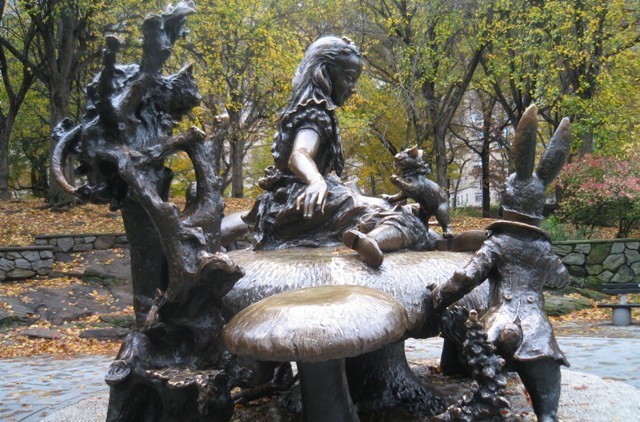
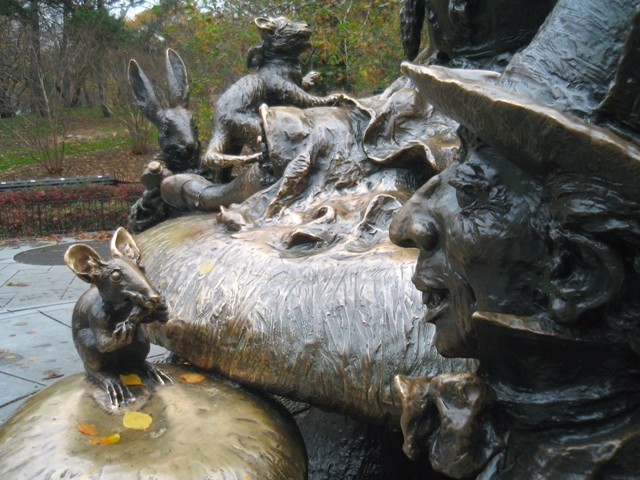
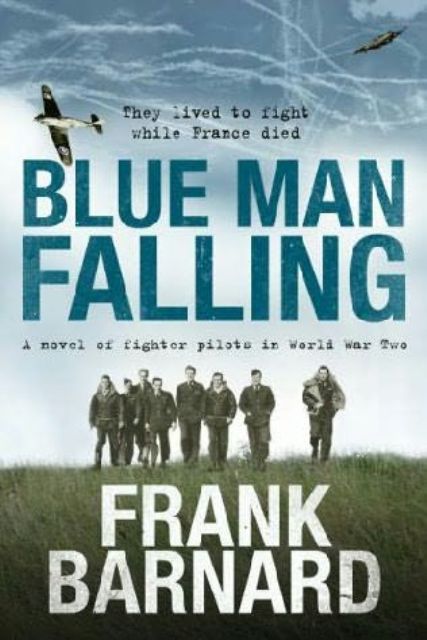
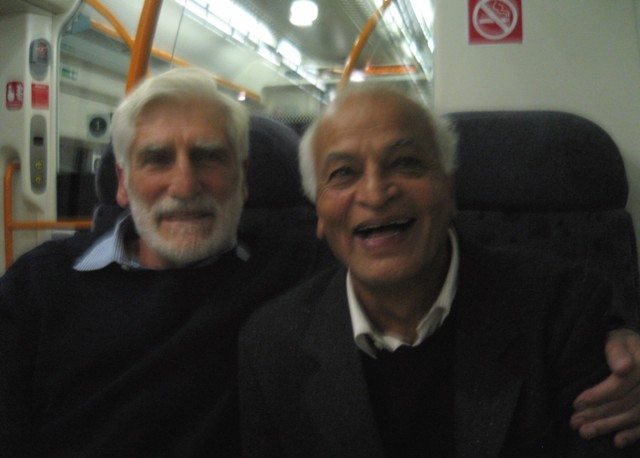
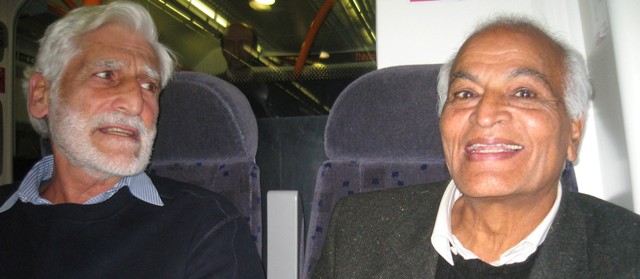
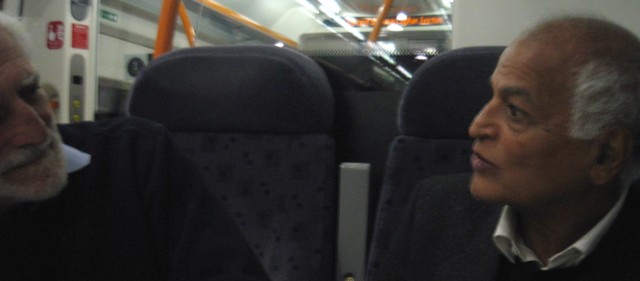
 Me, Sasha Silver, JP Renaut
Me, Sasha Silver, JP Renaut